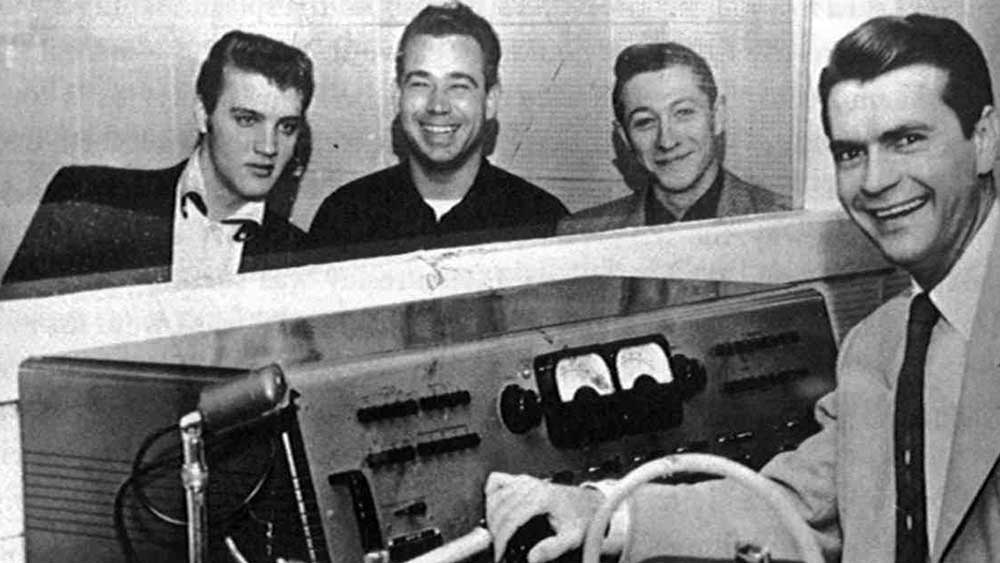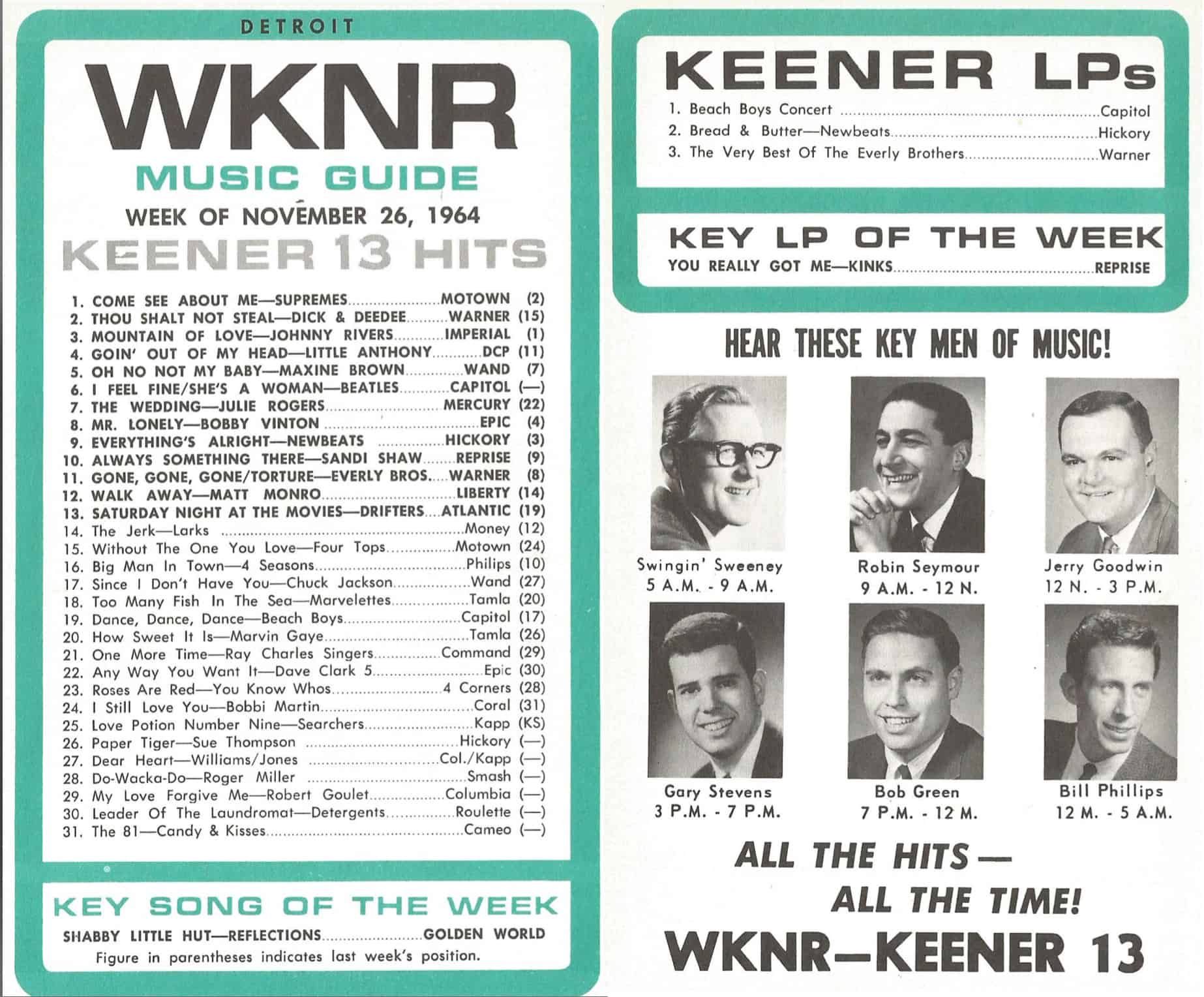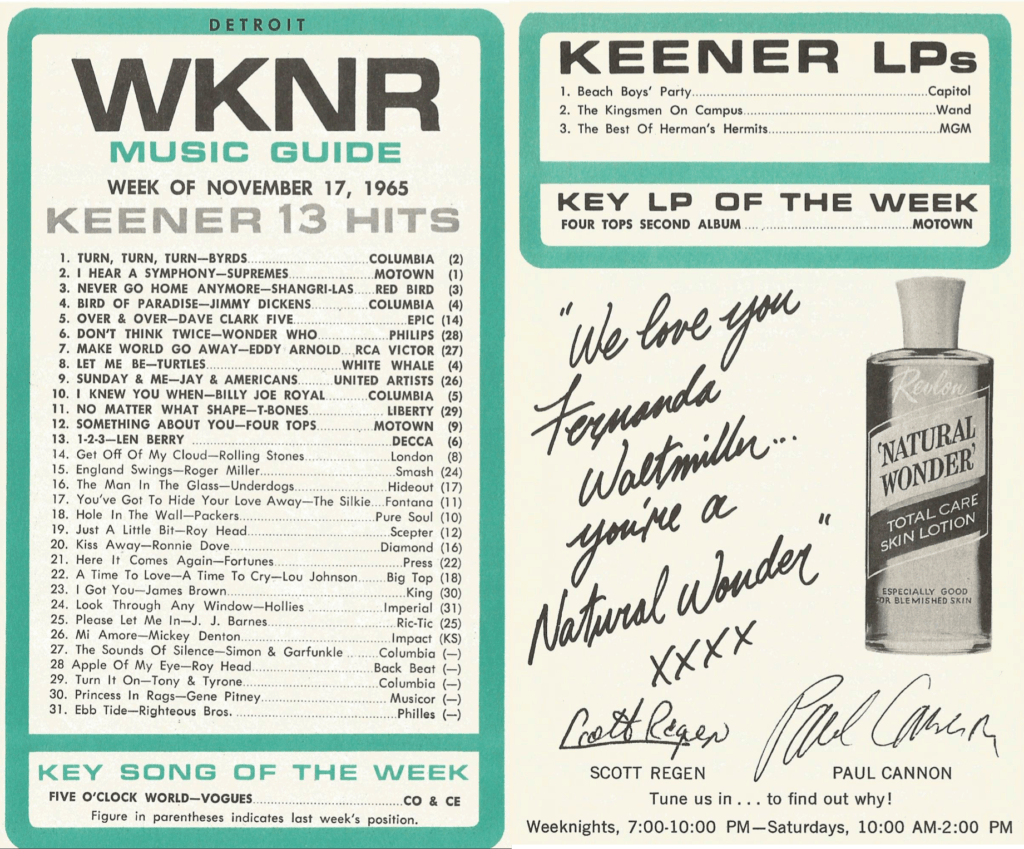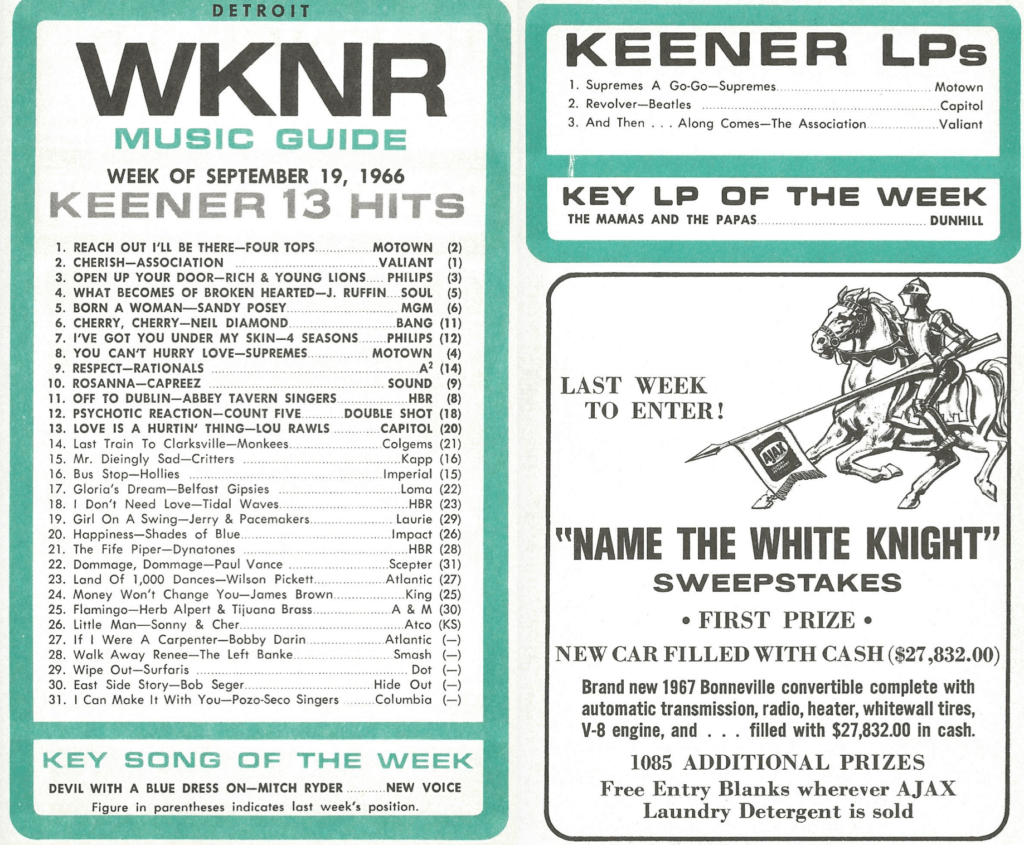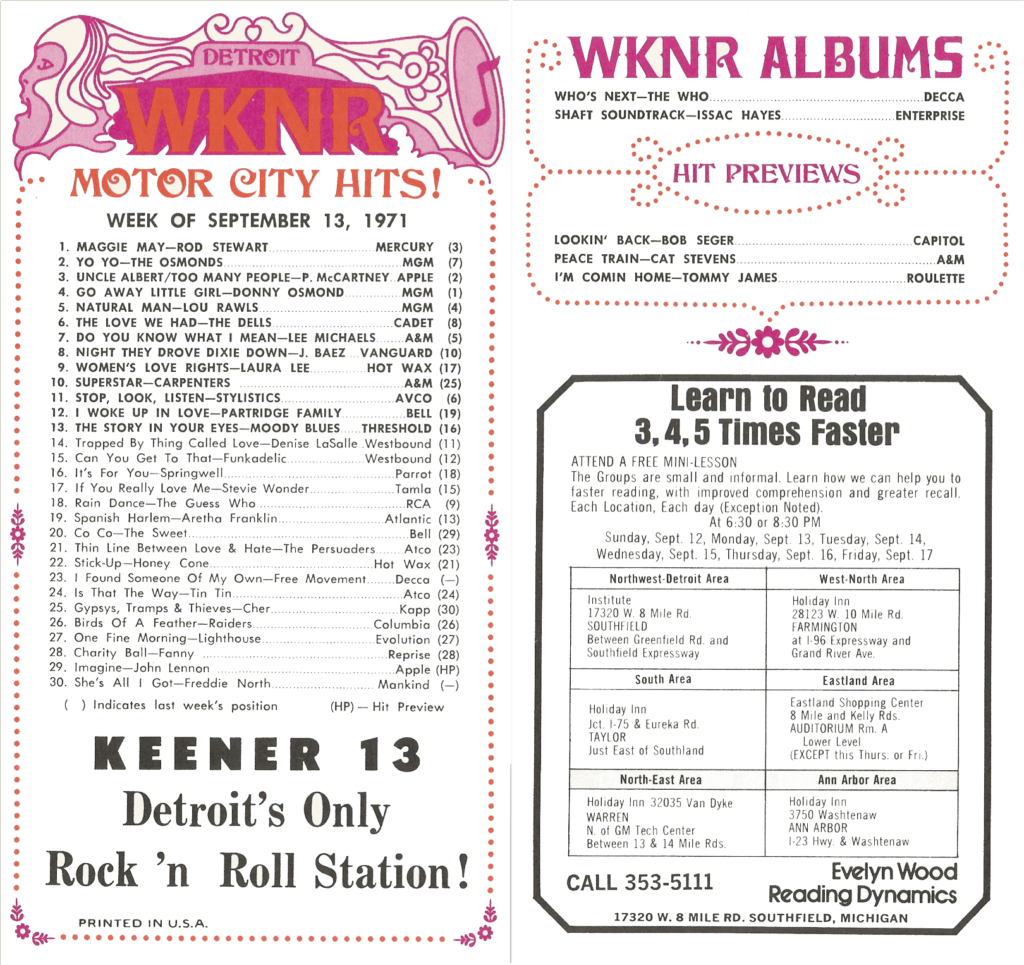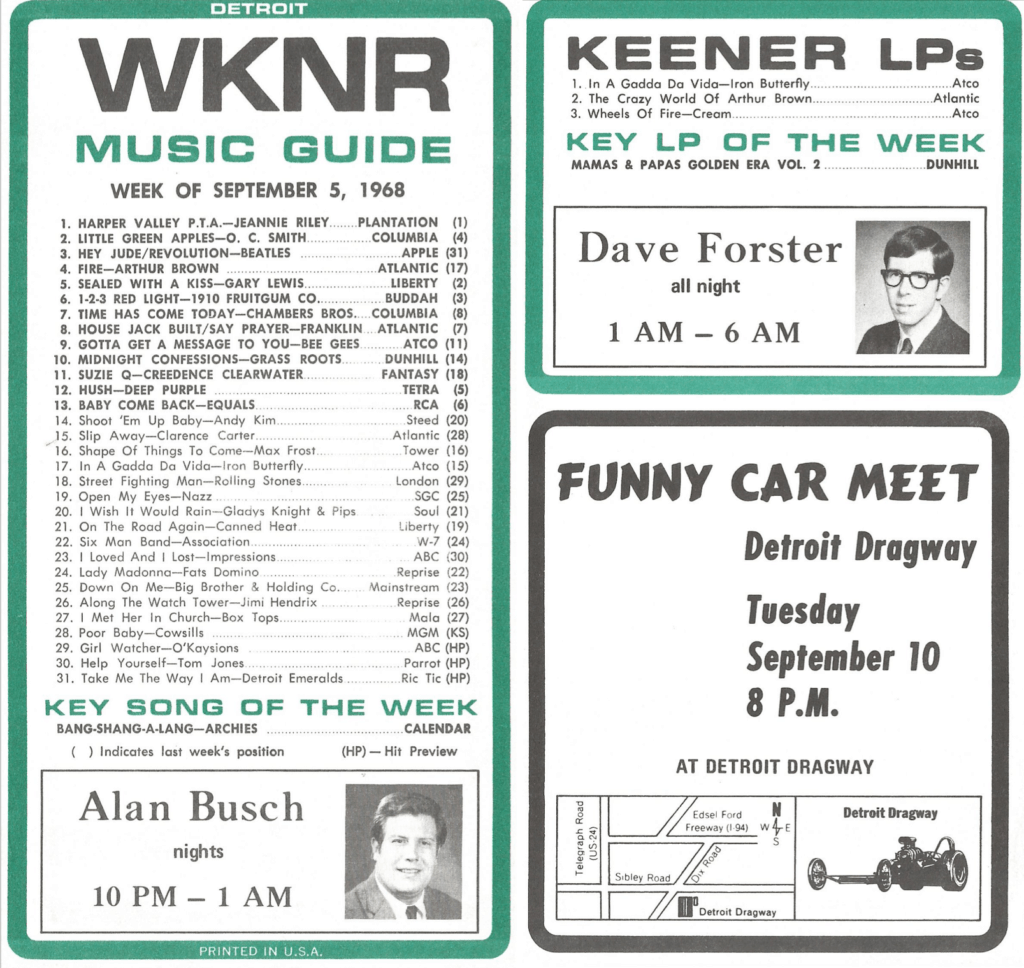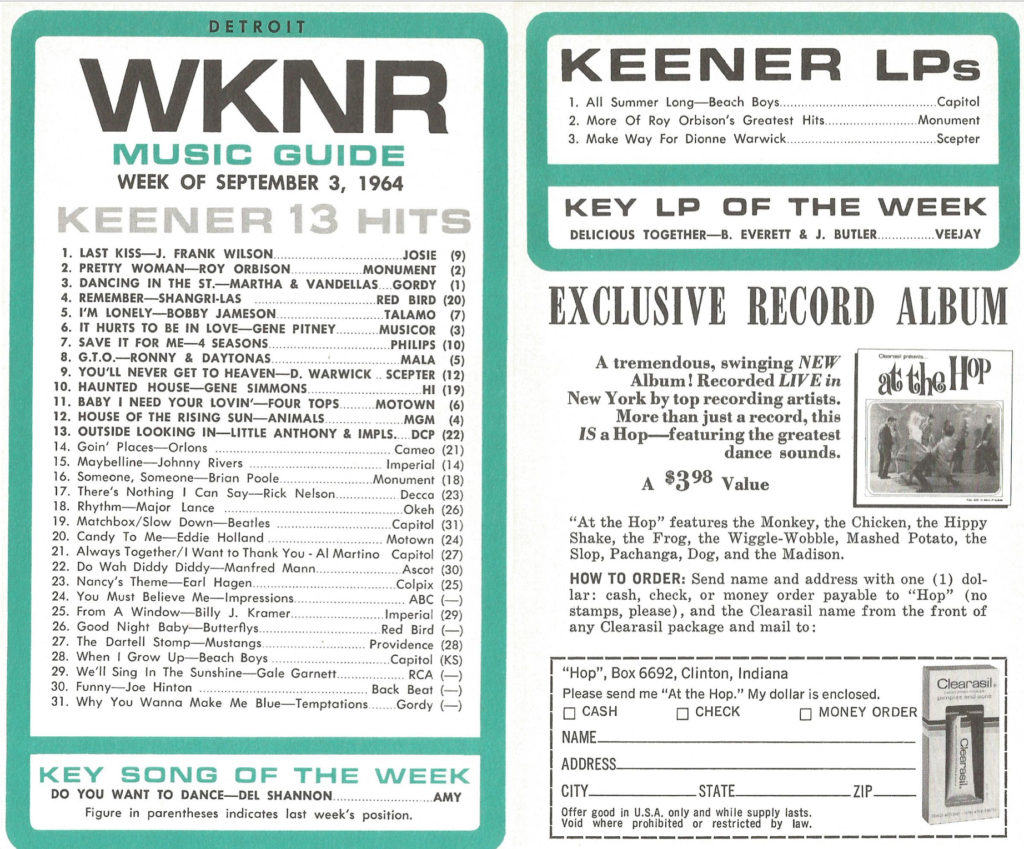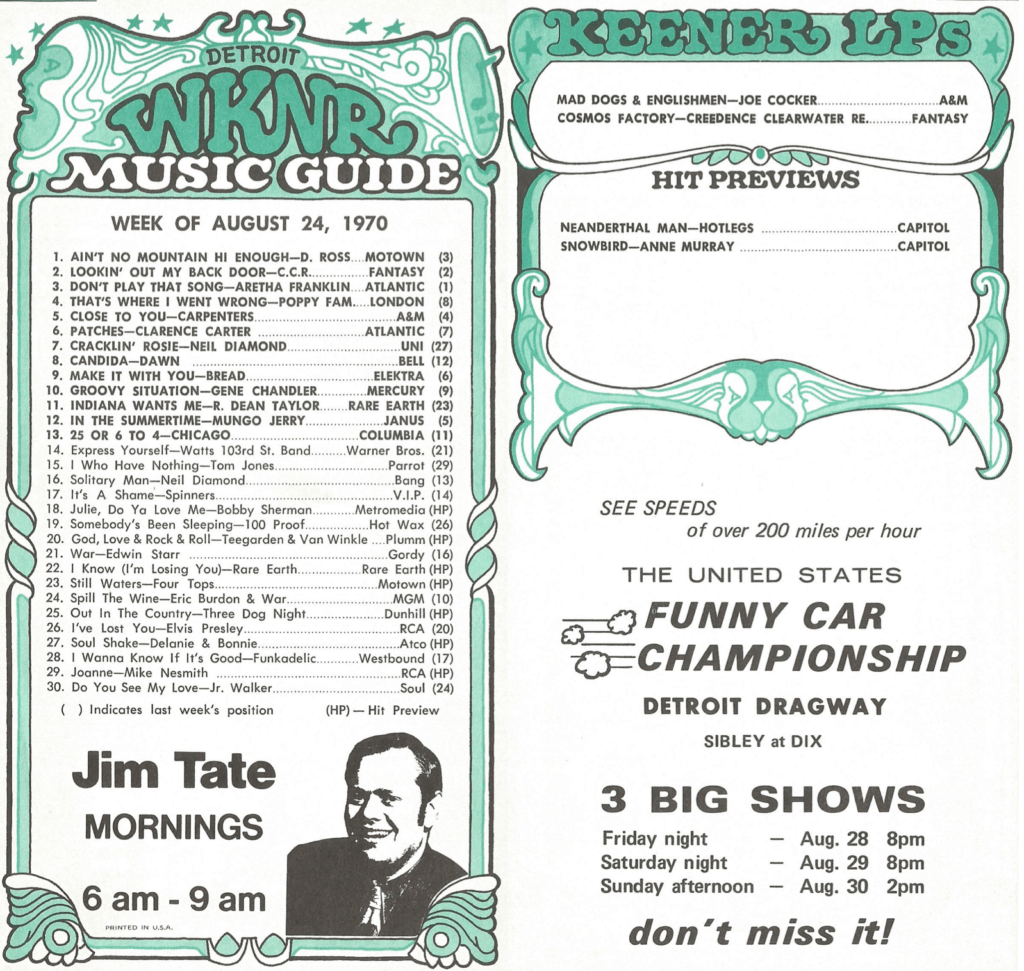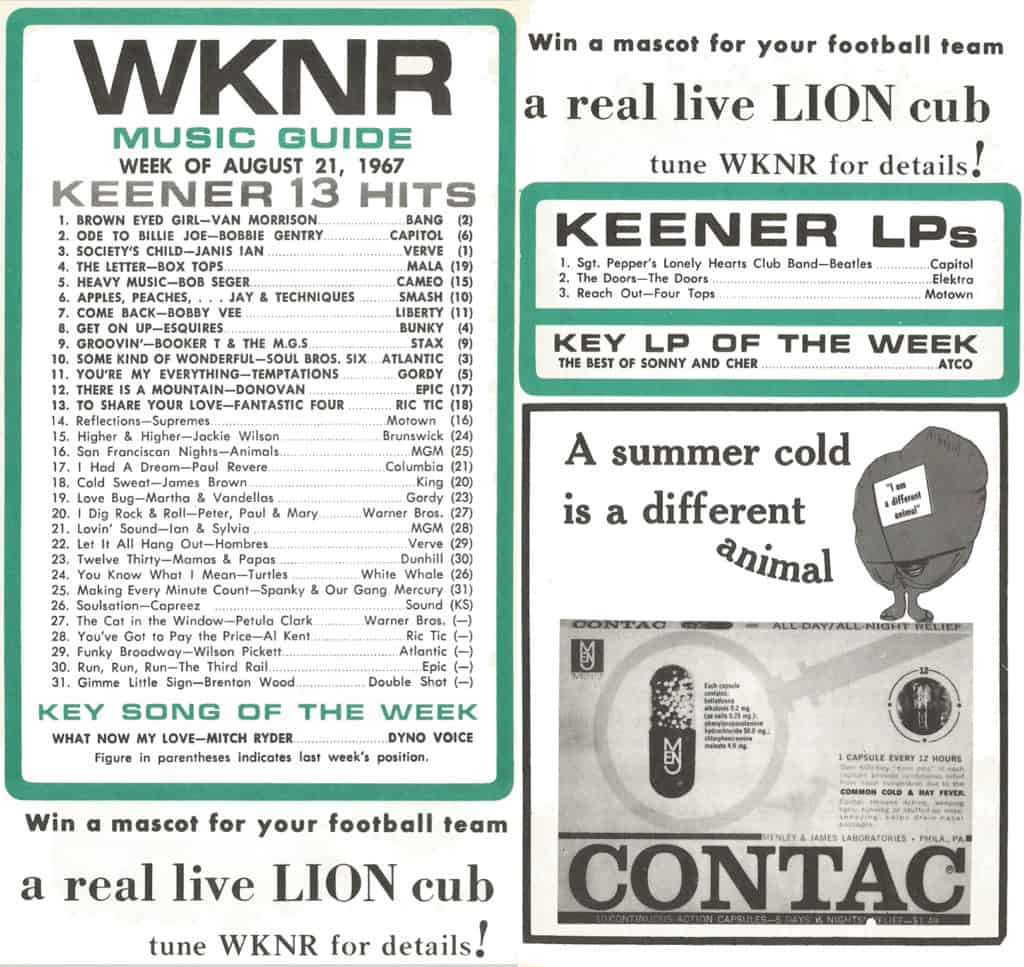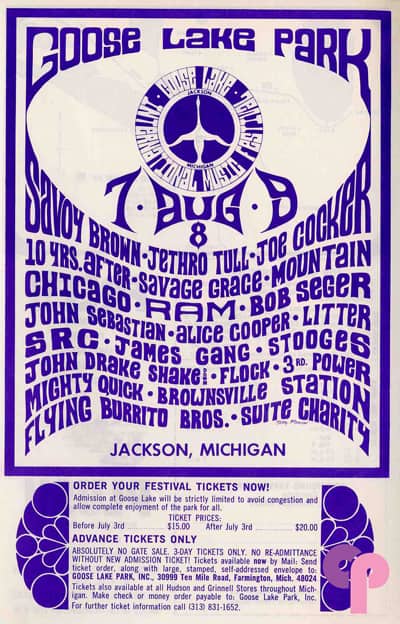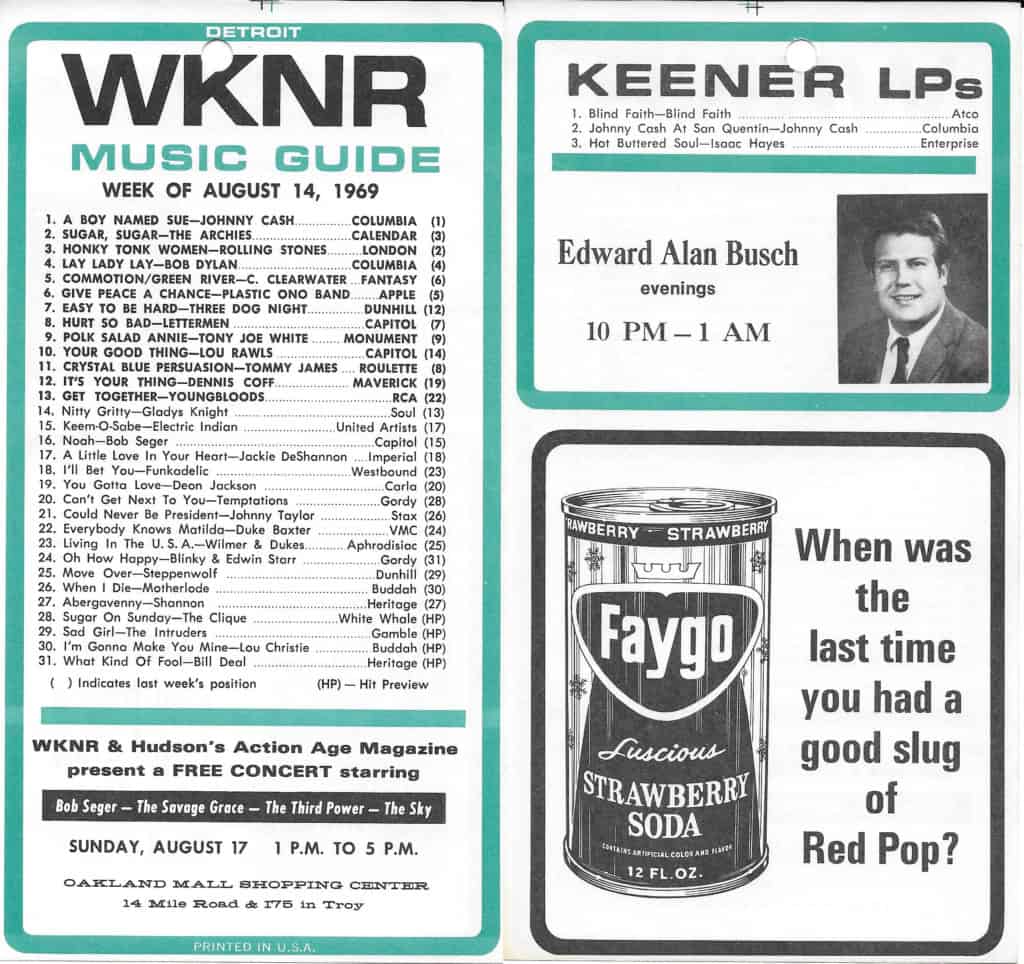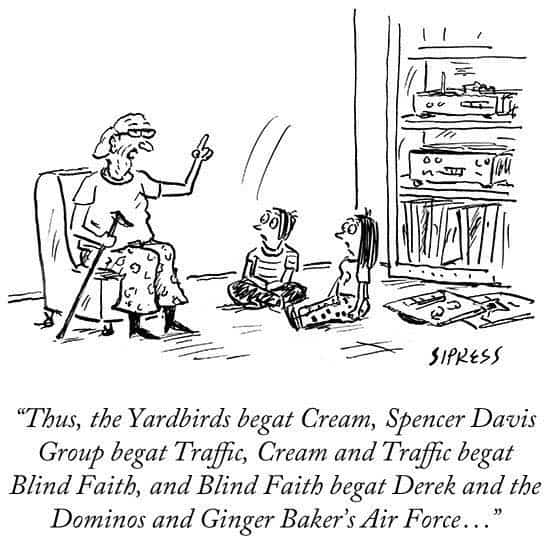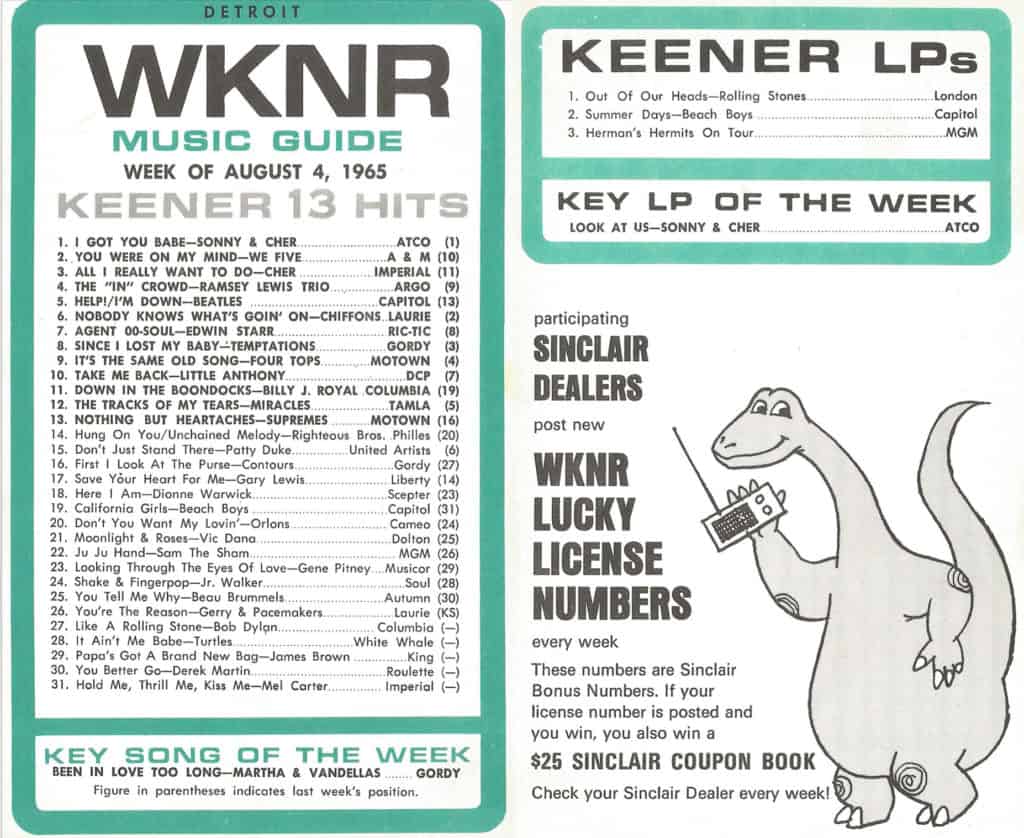This Week in Keenerland: November 25
The Headlines: Elvis signs with Sun Records. George gets deported. The Twist is a national craze. Dr. Who Debuts. Alices Restaurant is released.
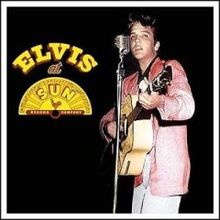 This week in 1965 was a big one for both Elvis Presley and Sam Phillips. The owner of Sun Records sold Elvis’ contract to RCA for $35,000, the largest amount ever paid to sign a recording artist at the time. Phillips invested his proceeds from the deal in a two-year-old Memphis-based hotel chain called Holiday Inn. You can see what the original Holiday Inns looked like, inside and out at The Henry Ford.
This week in 1965 was a big one for both Elvis Presley and Sam Phillips. The owner of Sun Records sold Elvis’ contract to RCA for $35,000, the largest amount ever paid to sign a recording artist at the time. Phillips invested his proceeds from the deal in a two-year-old Memphis-based hotel chain called Holiday Inn. You can see what the original Holiday Inns looked like, inside and out at The Henry Ford.
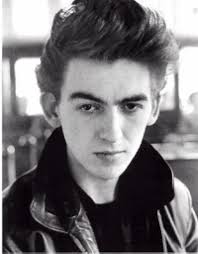 George Harrison was deported from Hamburg, Germany this week in 1960, where The Beatles had been playing at the Kaiserkeller club. The Germans figured out he was under 18 and couldn’t legally be performing in the country.
George Harrison was deported from Hamburg, Germany this week in 1960, where The Beatles had been playing at the Kaiserkeller club. The Germans figured out he was under 18 and couldn’t legally be performing in the country.
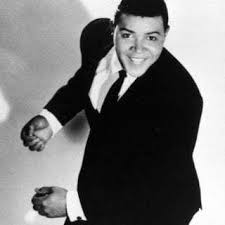 In 1961, the popularity of The Twist (video) reached its zenith with New York television station WOR airing hourly one-to-five-minute twist lessons featuring Chubby Checker.
In 1961, the popularity of The Twist (video) reached its zenith with New York television station WOR airing hourly one-to-five-minute twist lessons featuring Chubby Checker.
This week in 1963, those of us who grew up reading The Chronicles of Narnia lost a friend when author, poet and essayist, C.S. Lewis, died of uremia at 64.
That same week, the long-running sci-fi television series “Doctor Who” debuted in England on BBC One.
Record releases this week include 1965 included “My Generation” (video) by The Who and Stevie Wonder‘s “Uptight (Everything’s Alright)” (video). Stevie would promote the single by singing it with Scott Regen on Keener that same month. In ’68, Diana Ross And The Supremes & The Temptations released “I’m Gonna Make You Love Me.” (video) In 1970 George Harrison released “My Sweet Lord” (video) to the American audience. He would be sued for unintentionally copying Ronnie Mack’s song “He’s So Fine”, a 1963 hit for the the Chiffons.
James Brown caused a sensation and a riot in Kansas City this week in 1966. Cops stopped the show due to Brown’s “obscene dances,” and had to contend with some very unhappy fans.
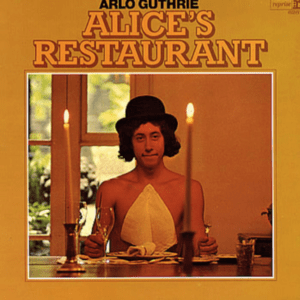 A Thanksgiving radio tradition began on November 20, 1967 when Arlo Guthrie released the album “Alice’s Restaurant.” (video) It’s been a holiday staple on classic rock stations across the country every since.
A Thanksgiving radio tradition began on November 20, 1967 when Arlo Guthrie released the album “Alice’s Restaurant.” (video) It’s been a holiday staple on classic rock stations across the country every since.
In-A-Gadda-Da-Vida (video) was still popular a year after it’s release in 1968. In Ashland, Virginia, Iron Butterfly performed in the 3,500-seat Crenshaw Gymnasium of Randolph-Macon College. Their opening act was a band called Steel Mill, that included Bruce Springsteen.
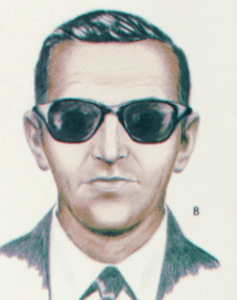 November 24, 1971…D.B. Cooper became a household name when he parachuted from a Northwest Airlines 727 over southwestern Washington state with $200,000 in ransom. Nobody ever could figure out Cooper’s whereabouts or true identity nor has all the money ever been recovered. An eight year old Brian Ingram found $5,880 in decaying $20 bills in February of 1980, which forensic experts concluded was part of the original ransom.
November 24, 1971…D.B. Cooper became a household name when he parachuted from a Northwest Airlines 727 over southwestern Washington state with $200,000 in ransom. Nobody ever could figure out Cooper’s whereabouts or true identity nor has all the money ever been recovered. An eight year old Brian Ingram found $5,880 in decaying $20 bills in February of 1980, which forensic experts concluded was part of the original ransom.
Keener Number Ones this week include:
1963) Louie Louie, Kingsmen
(1964) Mountain of Love, Johnny Rivers
(1965) Turn Turn Turn, Byrds
(1966) Good Vibrations, Beach Boys
(1967) Daydream Beliver/Goin’ Down, Monkees
(1968) Abraham Martin and John, Dion
(1969) Someday We’ll Be Together, Supremes
(1970) One Less Bell To Anwser, Fifth Dimension
(1971) Family Affair, Sly & The Family Stone
Our deep dive into the WKNR Music Guide features the week of November 26, 1964. For Motown records made the survey with The Supremes at Keener Hit Number One with “Come See About Me” (video). Keener was still tossing in tunes that would later be considered “Middle of the Road”, including Bobby Vinton‘s “Mr. Lonely” (video) and Matt Monro‘s “Walk Away” (video). Robert Goulet and Andy Williams also were on the survey. Confusion reigned around The Ray Charles Singers, which many thought were under the direction of the popular soul singer. In fact, they were the creation of Charles Raymond Offenberg and so named by Perry Como in 1959. They charted three times on Keener, all in 1964. Mort Crowley had departed WKNR by November, 1964, replaced in the mornings by Frank “Swingin” Sweeney. Robin Seymour, a WKMH holdover, held down the mid-day slot. He would depart for a television career in Canada as the host of “Swingin’ Time”.
We leave you with a live performance of the Beach Boys‘s “Dance, Dance, Dance”, which was on the way down at #19 on the WKNR Music Guide this week in 1964. In the day, the band was able to recreate the studio artistry of the Wrecking Crew’s backing tracks on stage. Their trademark harmonies came across well in a live environment.
This Week in Keenerland: November 18
We’ve been on vacation but are back in the saddle with another review of this week in Keenerland.

Here’s a look at Campus Martius in Detroit on Friday night, courtesy of Felicia Fullwood Photography. We highly recommend that you visit her website to check out her artistry. Growing up during the Keener era always meant visits to Motor City landmarks during the holidays. We remember the annual Christmas Fantasy at the Ford Rotunda, the holiday decorations on the 12th floor of Hudson’s (and that huge Christmas Tree covering the entire front of the building) and traditions that live on to this day including Wild Lights at the Detroit Zoo and the required trip north to Bronner’s in Frankenmuth. Our holiday television viewing season began with the America’s Thanksgiving Parade, which debuted in 1924 thanks to the JL Hudson Company. A Charlie Brown Thanksgiving, How the Grinch Stole Christmas, narrated by Boris Karloff, Rudolph the Red Nosed Reindeer with Burl Ives, and holiday movie musts like Miracle on 34th Street and White Christmas followed. We love how these “evergreen” productions can still be seen today.
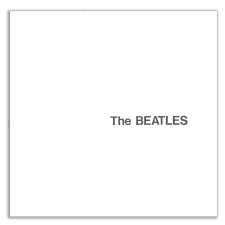 There is lots of talk about the release of The Beatles’ White Album Box Set. We’ve got one and it lives up to the hype, with over 5 hours of originals, alternate takes, and tunes that didn’t make the cut. Giles Martin did his father, George, proud, digging up the original source material and remixing the tracks to give us the same pristine listening experience we enjoyed with his Sgt. Pepper project. Who would have thought that Back in the USSR would be in the Billboard top ten again 5 decades later? Read Jordan Orlando’s review in this week’s New Yorker Magazine.
There is lots of talk about the release of The Beatles’ White Album Box Set. We’ve got one and it lives up to the hype, with over 5 hours of originals, alternate takes, and tunes that didn’t make the cut. Giles Martin did his father, George, proud, digging up the original source material and remixing the tracks to give us the same pristine listening experience we enjoyed with his Sgt. Pepper project. Who would have thought that Back in the USSR would be in the Billboard top ten again 5 decades later? Read Jordan Orlando’s review in this week’s New Yorker Magazine.
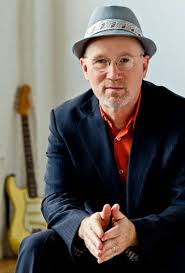
Happy Birthday to Berkeley native, Marshall Crenshaw. He turned 65 on November 11th. Before fronting the popular Marshall Crenshaw Band, he got his first big break in 1976, winning the role of John Lennon, performing in “Beatlemania” on both coasts that year.
Last week marked the 43rd anniversary of the sinking of the Great Lakes ore carrier SS Edmund Fitzgerald. The boat went down with all hands just north of Whitefish Point in Lake Superior in 1975. Gordon Lightfoot immortalized the event in song in 1976 (Video).
In 1964, Sam Cooke entered the RCA Victor’s Music Center of the World studios in New York, to record “Shake” and “It’s Got The Whole World Shakin’.” It would be his last session. Cooke was shot to death 3½ weeks later.
This week in 1968, Simon & Garfunkel began a marathon 100 hour recording session to produce “The Boxer.” With Fred Carter, Jr. on guitar and Hal Blaine on drums, The recording was taped at multiple locations, including Nashville, in New York City at St. Paul’s Chapel and the Columbia studios.
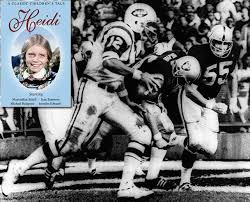 Another defining event of our generation happened on November 17, 1968 when NBC cut away from the final minutes of a New York Jets-Oakland Raiders game to begin the TV special, “Heidi,” on schedule. Fans who had been watching the game missed the the two touchdowns the Raiders scored in nine seconds, to beat the New York Jets, 43-32. NBC switchboards were jammed with complaints. From then on a policy of waiting to begin post-game programming until the game being broadcast was over, became the rule.
Another defining event of our generation happened on November 17, 1968 when NBC cut away from the final minutes of a New York Jets-Oakland Raiders game to begin the TV special, “Heidi,” on schedule. Fans who had been watching the game missed the the two touchdowns the Raiders scored in nine seconds, to beat the New York Jets, 43-32. NBC switchboards were jammed with complaints. From then on a policy of waiting to begin post-game programming until the game being broadcast was over, became the rule.
November 21 will be “Bob Seger Day” in Grand Rapids. Mayor Rosalynn Bliss bestowed the honor on Michigan’s favorite Rock and Roll Son in parallel with his upcoming concerts at the Van Andel Arena
Keener number ones this week include:
(1963) Louie Louie, Kingsmen – Keener’s first Hit Number 1
(1964) Mountain of Love, Johnny Rivers
(1965) Turn Turn Turn, Byrds
(1966) Winchester Cathedral, New Vaudeville Band
(1967) The Rain The Park & Other Things, Cowsills
(1968) Abraham Martin and John, Dion
(1969) Na Na Hey Hey, Steam
(1970) Tears of a Clown, Smokey Robinson & the Miracles
(1971) Family Affair, Sly & The Family Stone
Our deep dive into the WKNR Music Guide comes from the week ending November 17, 1965. Many classic hits were on their way up the charts including James Brown‘s “I Got You (I Feel Good)” (Video), Simon and Gar’s “Sounds of Silence” (Video) and “Ebb Tide” from the Righteous Brothers (Video). The Vogues “Five O’Clock World” (Video) was the Key Song of the Week. And who was Fernanda Waltmiller? Back in the day, she was the symbol of the Revlon company and the subject of a nationwide advertising campaign that inspired DJ’s in every major market to say, “We love you, Fernanda Waltmiller”. Scott Regen and Paul Cannon followed suit in the Revlon Natural Wonder ad on the back of the guide.
We leave you with this 1962 television broadcast of the Hudson’s Thanksgiving Day Parade. Enjoy the holiday and keep it Keener!
This Week in Keenerland: September 23
 This week in 1968, Detroit Tigers pitcher Denny McLain won his 31st game of the season. It was also the game where New York Yankee legend, Mickey Mantle, hit career home run #535 in what would be his last Motor City at bat. With victory firmly in the Tiger’s hands, McLain tossed a beefsteak to Mantle who slammed the ball into the right field bleachers. (That’s Don Wert watching Mantle round the bases.)
This week in 1968, Detroit Tigers pitcher Denny McLain won his 31st game of the season. It was also the game where New York Yankee legend, Mickey Mantle, hit career home run #535 in what would be his last Motor City at bat. With victory firmly in the Tiger’s hands, McLain tossed a beefsteak to Mantle who slammed the ball into the right field bleachers. (That’s Don Wert watching Mantle round the bases.)
Bob Seger is about to “Turn the Page”. Ann Arbor’s favorite rock and roll son is 73 and ready do be done with the road. He’s announced that his final tour will begin in November in Grand Rapids, ending in May in Houston. While no Detroit dates have yet been confirmed, his team has intimated that additional appearances may be added.
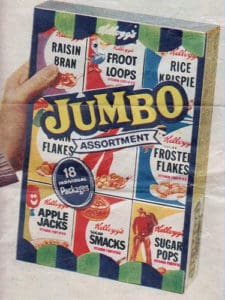 Remember when cereals touted sugar? In the Kellogg portfolio alone, we remember Sugar Frosted Flakes, Sugar Smacks, Sugar Pops and Sugar Jets. And how many of us ate our breakfast out of the cereal box from a Jumbo Assortment? “K – E – Double L – O – Double G – S” of Battle Creek was a perennial sponsor of classic television programs from the Keener era, from My 3 Sons to Dennis the Menace. The company is still Michigan based and providing the “best to you” for over 112 years.
Remember when cereals touted sugar? In the Kellogg portfolio alone, we remember Sugar Frosted Flakes, Sugar Smacks, Sugar Pops and Sugar Jets. And how many of us ate our breakfast out of the cereal box from a Jumbo Assortment? “K – E – Double L – O – Double G – S” of Battle Creek was a perennial sponsor of classic television programs from the Keener era, from My 3 Sons to Dennis the Menace. The company is still Michigan based and providing the “best to you” for over 112 years.
A number of television dynasties got their start this week in Keener history. The Patty Duke Show (Video) premiered this week in 1963 on WXYZ and ABC. Three iconic shows got their start this week in 1965: I Dream of Jeannie (Video) and Get Smart (Video) on WWJ / NBC and the rock and roll show Shindig! (Video of the first show) on ABC.
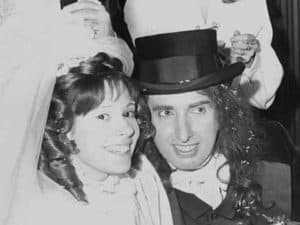 On September 18, 1969, NBC’s “The Tonight Show” was the setting where 37-year-old falsetto singer Tiny Tim announced his forthcoming marriage to 17-year-old “Miss Vicki” Budinger. Host Johnny Carson then offered up his show as a venue for the event, which attracted 40 million TV viewers on December 17, 1969 (Video).
On September 18, 1969, NBC’s “The Tonight Show” was the setting where 37-year-old falsetto singer Tiny Tim announced his forthcoming marriage to 17-year-old “Miss Vicki” Budinger. Host Johnny Carson then offered up his show as a venue for the event, which attracted 40 million TV viewers on December 17, 1969 (Video).
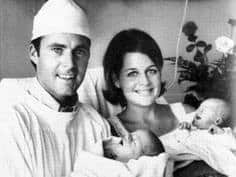 This week in 1967…Singer/actor Rick Nelson and wife Kris welcomed twin sons, Gunnar and Matthew. The two front men of the band Nelson have 51 birthday candles on their cake. We lost their dad in a plane crash on December 31st, 1985 at the age of 45.
This week in 1967…Singer/actor Rick Nelson and wife Kris welcomed twin sons, Gunnar and Matthew. The two front men of the band Nelson have 51 birthday candles on their cake. We lost their dad in a plane crash on December 31st, 1985 at the age of 45.
This week in 1970, Jim Morrison of The Doors was found guilty of indecent exposure and profanity during a concert at the Dinner Key Auditorium in Coconut Grove, Florida. He died the following July before he could appeal.
Keener number ones this week include:
Our deep dive into the WKNR Music Guide comes from the week ending September 19, 1966. It’s filled with iconic music. Two Motown tunes were in the Top 10, Richard and the Young Lions were at Number 3 with one of the first hits to feature “fuzz” guitar, “Open Up Your Door”. (Swingin’ Time Video). The Monkees were climbing the charts with their first single, The Boyce and Hart penned “Last Train to Clarksville” (Video). The Surfaris re-entered the chart at number 29, three years after first spawning a generation of questions to drummers everywhere: “Can you play ‘Wipe Out’?” (Video). And Ann Arbor’s Rationals were at Number 9 with their take on Otis Redding’s “Respect” (Swingin’ Time Video). The back of the guide featured Keener’s “Name the White Knight” contest. Remember the Ajax commercial featuring the phrase “Stronger than dirt”? We have the original video from 1966. What Keener hit ended with the same phrase? Answer: The Doors 1969 Keener Number 1 – Touch Me (Video).
This Week in Keenerland: September 16
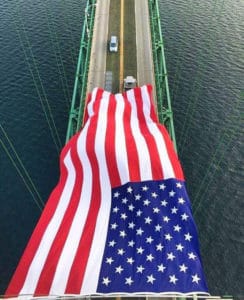 One of our most popular Facebook posts included this photograph of Old Glory flying high above the Mackinac Bridge in remembrance of 9/11. The world’s 20th-longest main span and the longest suspension bridge between Crossing it was a rite of passage for many in the Keener Generation.
One of our most popular Facebook posts included this photograph of Old Glory flying high above the Mackinac Bridge in remembrance of 9/11. The world’s 20th-longest main span and the longest suspension bridge between Crossing it was a rite of passage for many in the Keener Generation.

Bringing back The Grande? The iconic Detroit landmark, that Keener’s Russ Gibb branded as the home of Motor City Rock & Roll is a few steps closer to a home on the National Register of Historic Places. The venue, which has deteriorated over the years, is currently owned by the Chapel Hill Baptist Church. The organization has indicated that a restored Grande might be made available for “secular events” if rennovated. Freep’s Brian McCollum writes that, “The Grande spawned an enduring mythology and valuable collectibles by rock-poster artists such as Gary Grimshaw and Carl Lundgren. The venue was the subject of the award-winning 2012 documentary ‘Louder Than Love.'”
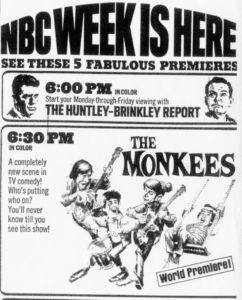 Where were you when you first saw The Monkees (Video) on Television? 52 years ago, on September 12, 1966, The Monkees debuted “In Color” on WWJ-TV and NBC. Spanning 2 seasons and 58 episodes, the show set the standard for the concept of the music video, which, once upon a time, was a centerpiece at MTV – Music Television. The band members, who were hand picked by the show’s producers and backed by some of the best songwriters and session musicians of the time, have become the stuff of legend with tours featuring some or all of the surviving Monkees continuing to this day.
Where were you when you first saw The Monkees (Video) on Television? 52 years ago, on September 12, 1966, The Monkees debuted “In Color” on WWJ-TV and NBC. Spanning 2 seasons and 58 episodes, the show set the standard for the concept of the music video, which, once upon a time, was a centerpiece at MTV – Music Television. The band members, who were hand picked by the show’s producers and backed by some of the best songwriters and session musicians of the time, have become the stuff of legend with tours featuring some or all of the surviving Monkees continuing to this day.
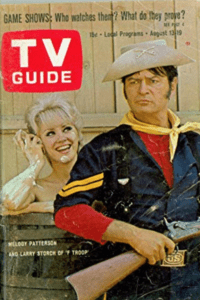 The fall television season was something we all looked forward to back in our youth. Other iconic shows that debuted this week in Keener history include, the sitcom “F-Troop,” (Video) starring Forrest Tucker, Larry Storch, Ken Berry, and Melody Patterson, which began a two-season run on WXYZ and ABC this week in 1965. Two years later, “Ironside,” (Video) starring Raymond Burr, Don Galloway, Barbara Anderson, and Don Mitchell, premiered on WWJ and NBC. It would last for 8 seasons. This week in 1968, “The Archies” cartoon series debuted, Saturday mornings on CBS. The fictional band, fronted in real life by Barry Manilow‘s future collaborator, Ron Dante, had a number one hit on Keener in 1969 with “Sugar Sugar”.
The fall television season was something we all looked forward to back in our youth. Other iconic shows that debuted this week in Keener history include, the sitcom “F-Troop,” (Video) starring Forrest Tucker, Larry Storch, Ken Berry, and Melody Patterson, which began a two-season run on WXYZ and ABC this week in 1965. Two years later, “Ironside,” (Video) starring Raymond Burr, Don Galloway, Barbara Anderson, and Don Mitchell, premiered on WWJ and NBC. It would last for 8 seasons. This week in 1968, “The Archies” cartoon series debuted, Saturday mornings on CBS. The fictional band, fronted in real life by Barry Manilow‘s future collaborator, Ron Dante, had a number one hit on Keener in 1969 with “Sugar Sugar”.
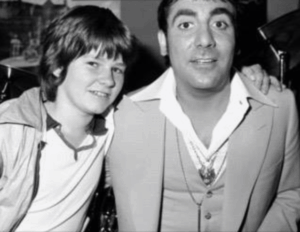 From the “how did we get that old” department: Happy 53rd birthday to Ringo‘s son, Zak Starkey. According to the College of Rock and Roll Knowledge: Zak has been the unofficial drummer for The Who since 1994. His Godfather was the band’s original drummer, Keith Moon, who bought Zak his first drum kit. Another percussive great, RUSH‘s Neil Peart celebrated his 66th birthday this week.
From the “how did we get that old” department: Happy 53rd birthday to Ringo‘s son, Zak Starkey. According to the College of Rock and Roll Knowledge: Zak has been the unofficial drummer for The Who since 1994. His Godfather was the band’s original drummer, Keith Moon, who bought Zak his first drum kit. Another percussive great, RUSH‘s Neil Peart celebrated his 66th birthday this week.
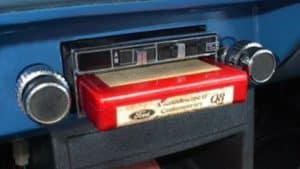 This month in 1965, Ford became the first automotive company to offer factory installed 8 track tape players. The format, based on the venerable Fidelipac tape cartridge technology used widely in broadcasting, had a brief prime from 1964 through 1968, when it was quickly supplanted by the more versatile and recordable compact cassette. How many 8 tracks did you own back in the day? Here’s a classic Radio Shack 8 Track commercial.
This month in 1965, Ford became the first automotive company to offer factory installed 8 track tape players. The format, based on the venerable Fidelipac tape cartridge technology used widely in broadcasting, had a brief prime from 1964 through 1968, when it was quickly supplanted by the more versatile and recordable compact cassette. How many 8 tracks did you own back in the day? Here’s a classic Radio Shack 8 Track commercial.
Keener Number Ones for this week include:
(1964) Last Kiss, J Frank Wilson
(1965) Eve of Destruction, Barry McGuire
(1966) Cherish, Association
(1967) The Letter, Box Tops
(1968) Hey Jude/Revolution, Beatles
(1969) I Can’t Get Next To You, Temptations
(1970) Cracklin’ Rosie, Neil Diamond
(1971) Maggie May, Rod Stewart
![]() Keener on Spotify: 13 Hits from September 13, 1971.
Keener on Spotify: 13 Hits from September 13, 1971.
Our deep dive into the WKNR Music Guide comes from this week in 1971. Keener was touting itself as “Detroit’s only rock ‘n roll radio station”, having long ceded dominance to CKLW’s 50,000 watts and tight Drake format in Canada. Did you ever take a class at Evelyn Wood Reading Dynamics?
We leave you with video of Rod Stewart singing the number one song from this week in 1971.
This Week in Keenerland: September 9
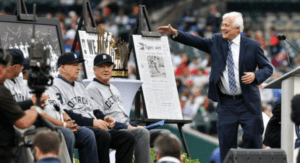
As the great Detroit News sports columnist Lynn Henning wrote, “you had to have been there to appreciate the ’68 Tigers.” We were, we did and we do! It was a different time. There was no free agency. The parsimonious GM, Jim Campbell was always looking to save money; the team each earned $4,000 and a ring for the championship season and many needed second jobs to make ends meet. The season had its ups and downs and as the World Series began, it seemed like the St. Louis Cardinals were invincible. As every true Detroiter knows, the Tigers did what they had done all season, they stayed in the game and ultimately prevailed. Here’s a link to the Ernie Harwell / Ray Lane documentary, “The Year of The Tiger” along with this link to Ernie’s complete play-by-play of Game 7.
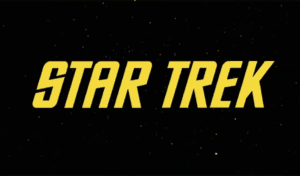
52 years ago this week, Star Trek burst onto television screens on WWJ and NBC. The space opera, created by Gene Roddenberry and starring William Shatner and Leonard Nimoy was cancelled after 3 years and 79 episodes, but found it’s perennial audience in syndication. It became the first bonafide multimedia franchise spawning 13 films and 6 television series. Star Trek made household names of the original series stars and caused us to examine our prejudices through a sci-fi lens not unlike Rod Serling’s Twilight Zone. A bit of Star Trek trivia: The series was actually first seen on Canada’s CTV network (not the CBC affiliate, CKLW/Channel 9, which we could get in much of the Detroit area) before it’s US premiere on September 8, 1966.
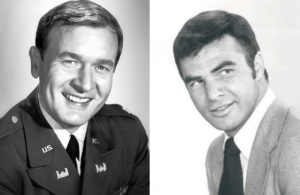 Bill Daily and Burt Reynolds left us this past week. Daily was a television fixture as Larry Hagman’s sidekick on “I Dream of Jeannie“. Burt was a versatile and underrated actor who played a variety of roles, becoming a giant star at the height of the CB craze when he teamed up with Sally Field, Jerry Reed and Jackie Gleason in “Smokey and the Bandit“. While he claimed to have been born in Georgia, Burt was actually a native of Lansing, Michigan. Everyone has a favorite Burt Reynolds film. Ours is 1978’s tribute to the life of Hollywood stunt people, “Hooper“. Here’s a scene from that film, also featuring Brian Keith and a toupeed Terry Bradshaw.
Bill Daily and Burt Reynolds left us this past week. Daily was a television fixture as Larry Hagman’s sidekick on “I Dream of Jeannie“. Burt was a versatile and underrated actor who played a variety of roles, becoming a giant star at the height of the CB craze when he teamed up with Sally Field, Jerry Reed and Jackie Gleason in “Smokey and the Bandit“. While he claimed to have been born in Georgia, Burt was actually a native of Lansing, Michigan. Everyone has a favorite Burt Reynolds film. Ours is 1978’s tribute to the life of Hollywood stunt people, “Hooper“. Here’s a scene from that film, also featuring Brian Keith and a toupeed Terry Bradshaw.
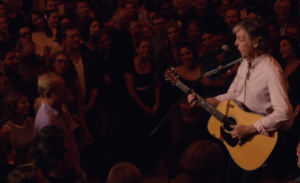 Paul McCartney streamed a live concert from Grand Central Station over YouTube this week. His voice now reflects his mileage, but the crowd loved every minute of his review of more than 5 decades of Paul’s musical artistry. The set list was a mixture of both Beatle classics and the best of McCartney’s solo career.
Paul McCartney streamed a live concert from Grand Central Station over YouTube this week. His voice now reflects his mileage, but the crowd loved every minute of his review of more than 5 decades of Paul’s musical artistry. The set list was a mixture of both Beatle classics and the best of McCartney’s solo career.
Grand Funk’s Don Brewer, Beach Boy Al Jardine, Al Stewart and Gloria Gaynor are among this week’s Keener birthday celebrants. The sitcom “The Flying Nun,” (Video) starring Sally Field, Marge Redmond, Madeleine Sherwood, and Alejandro Rey, began its three-season run on WXYZ and ABC this week in 1967.
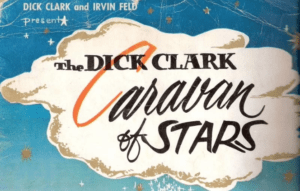 This week in 1959, Dick Clark‘s “Caravan of Stars” opened the Michigan State Fair with performances by Frankie Avalon, Annette Funicello, Duane Eddy, LaVern Baker, Jack Scott, the Coasters, and Jan & Dean. During a 1967 television interview, Michigan Gov. George Romney claimed he had undergone “brainwashing” by U.S. officials while visiting Vietnam two years earlier. And this week in 1968, Eric Clapton became the first non-Beatle to appear on one of their recordings when he overdubbed his guitar solo for “While My Guitar Gently Weeps.” (Video)
This week in 1959, Dick Clark‘s “Caravan of Stars” opened the Michigan State Fair with performances by Frankie Avalon, Annette Funicello, Duane Eddy, LaVern Baker, Jack Scott, the Coasters, and Jan & Dean. During a 1967 television interview, Michigan Gov. George Romney claimed he had undergone “brainwashing” by U.S. officials while visiting Vietnam two years earlier. And this week in 1968, Eric Clapton became the first non-Beatle to appear on one of their recordings when he overdubbed his guitar solo for “While My Guitar Gently Weeps.” (Video)
Keener Number Ones for this week include:
(1964) Last Kiss, J Frank Wilson
(1965) Eve of Destruction, Barry McGuire
(1966) Cherish, Association
(1967) The Letter, Box Tops
(1968) Harper Valley PTA, Jeannie C Riley
(1969) Sugar Sugar, Archies
(1970) Cracklin’ Rosie, Neil Diamond
(1971) Go Away Little Girl, Donny Osmond
![]() Keener on Spotify: 13 Hits from September 5, 1968.
Keener on Spotify: 13 Hits from September 5, 1968.
Our deep dive into the WKNR Music Guide comes from this week in 1968. “Hey Jude” was rocketing toward the top, where Jeannie C. Riley‘s tale about an uptight parent teacher association held sway. The eclectic tastes of the Detroit radio audience can be seen with diverse chart entries from the 1910 Fruit Gum Company, Deep Purple, Iron Butterfly, The Association and Fats Domino. With Jim Jeffries departure for Atlanta, Dave Forster took over the all night shift on Keener, and the Funny Cars were still stars at Detroit Dragway (Sibley at Dix).
We leave you with the images we saw that fall day in 1968 when the Tigers won the Series. Enjoy this video of the final inning of the final game and remember where you were and what you were doing.
This Week in Keenerland: September 2
 Pink Cadillacs and live coverage: Detroit gave Aretha Franklin a send-off befitting her contribution to the pantheon of soul. Over 100 pink vehicles were on the scene as was Detroit television and several cable networks. See the entire funeral here.
Pink Cadillacs and live coverage: Detroit gave Aretha Franklin a send-off befitting her contribution to the pantheon of soul. Over 100 pink vehicles were on the scene as was Detroit television and several cable networks. See the entire funeral here.
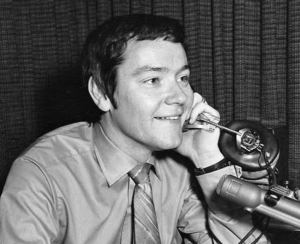 Those of us who grew up in Keenerland also listened to and respected “The Great Voice of the Great Lakes”. WJR’s 50,000 watt signal was home to one of the steadiest and most professional lineups of talent in the market. We remember J.P. McCarthy in the Morning, Karl Hass, Mike Whorf and the Focus interview program in the Middays and Jimmy Launce in the afternoons. Ernie Harwell was the voice of summer and the WJR News Team put together long form broadcasts that covered Detroit’s ever changing scene in award winning style. Another of the WJR team left us this week when Jimmy Launce died at age 84 in Sarasota. What’s less known is Jimmy’s Keener connection. He worked at WKNR’s sister station in Battle Creek in 1959, before the call letters were WKFR. Jimmy was also the first host of the Focus program, along with Lee Murray. Here’s a link to Jimmy’s closing theme: “Gina” recorded by Don Costa.
Those of us who grew up in Keenerland also listened to and respected “The Great Voice of the Great Lakes”. WJR’s 50,000 watt signal was home to one of the steadiest and most professional lineups of talent in the market. We remember J.P. McCarthy in the Morning, Karl Hass, Mike Whorf and the Focus interview program in the Middays and Jimmy Launce in the afternoons. Ernie Harwell was the voice of summer and the WJR News Team put together long form broadcasts that covered Detroit’s ever changing scene in award winning style. Another of the WJR team left us this week when Jimmy Launce died at age 84 in Sarasota. What’s less known is Jimmy’s Keener connection. He worked at WKNR’s sister station in Battle Creek in 1959, before the call letters were WKFR. Jimmy was also the first host of the Focus program, along with Lee Murray. Here’s a link to Jimmy’s closing theme: “Gina” recorded by Don Costa.
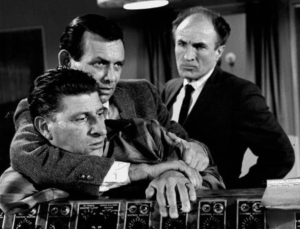 Were you one of the 25.7 million households to watch the last episode of “The Fugitive” on WXYZ (ABC) this past week in 1967? David Jansen as the wrongly accused Dr. Richard Kimble was pursued by Barry Morse‘s detective Philip Gerard for four seasons, climaxing in the capture of the villainous “One Armed Man”, portrayed by real life amputee, Bill Raisch. Raisch went on to become a long time acting teacher. He had a famous fight scene with Kirk Douglas in Lonely are the Brave in 1962 and can be seen in a crowd scene in the sci-fi classic, War of the Worlds. Raisch lost his arm during World War II. Watch the final 5 minutes of the penultimate Fugitive episode here.
Were you one of the 25.7 million households to watch the last episode of “The Fugitive” on WXYZ (ABC) this past week in 1967? David Jansen as the wrongly accused Dr. Richard Kimble was pursued by Barry Morse‘s detective Philip Gerard for four seasons, climaxing in the capture of the villainous “One Armed Man”, portrayed by real life amputee, Bill Raisch. Raisch went on to become a long time acting teacher. He had a famous fight scene with Kirk Douglas in Lonely are the Brave in 1962 and can be seen in a crowd scene in the sci-fi classic, War of the Worlds. Raisch lost his arm during World War II. Watch the final 5 minutes of the penultimate Fugitive episode here.
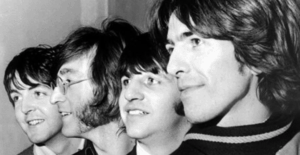 If ever a song summed up a summertime memory it’s The Beatles‘ Hey Jude, (Video) released in the summer of 1968. Legend has it that Paul McCartney wrote it for John Lennon‘s then 5 year old son son, Jullian (Jules), in the wake of John’s divorce from Jules’ mother, Cynthia. Rolling Stone calls the tune, “a tribute to their friendship, right at the moment it was starting to fracture.”
If ever a song summed up a summertime memory it’s The Beatles‘ Hey Jude, (Video) released in the summer of 1968. Legend has it that Paul McCartney wrote it for John Lennon‘s then 5 year old son son, Jullian (Jules), in the wake of John’s divorce from Jules’ mother, Cynthia. Rolling Stone calls the tune, “a tribute to their friendship, right at the moment it was starting to fracture.”
Keener Number Ones for this week include:
(1964) Last Kiss, J Frank Wilson
(1965) Eve of Destruction, Barry McGuire
(1966) Cherish, Association
(1967) The Letter, Box Tops
(1968) Harper Valley PTA, Jeannie C Riley
(1969) Sugar Sugar, Archies
(1970) Cracklin’ Rosie, Neil Diamond
(1971) Go Away Little Girl, Donny Osmond
Keener birthdays this week include, Daryl Dragon (August 27) of the Captain and Tennille, Wayne Osmond (August 28) of the Osmond Brothers, and Van Morrison (August 31).
![]() Keener on Spotify: 13 Hits from the week of September 3, 1964.
Keener on Spotify: 13 Hits from the week of September 3, 1964.
Our deep dive into the WKNR Music Guide comes from the week ending September 3, 1964. Keener was a month away from celebrating her first birthday and was at the top of the Detroit rock radio ratings. The musical themes included car songs, there were entries from the British Invasion and some Motown Magic, and it was a time when the likes of Earl Hagen and Al Martino could still score a Top 40 hit. Clearasil was a product that every teenager knew about (check out this 1960s vintage commercial) and The Beach Boys were about to pivot away from simply surf tunes with “All Summer Long” at the top of the LP Charts. In one of those continuity errors that often happens in Hollywood, All Summer Long plays over the closing credits of the film “American Graffiti” which documents the end of the summer of ’62.
Another oddity from this week in 1964 was the appearance of Jumpin Gene Simmons’ (no relation to the guy from Kiss). His “Haunted House” stood at Number 10, a record that would become an annual novelty hit during the Halloween season. We’ll leave you with a video rendition of this fun one-hit-wonder.
This Week in Keenerland: August 26
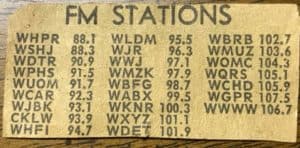 An artifact from yesteryear: Michael Audia shared this late 60s Detroit FM Radio line up on Facebook this week. We can date the find based on the inclusion of WXYZ-FM. The ABC O&O took on it’s famous moniker, WRIF, on February 14 1971. Progressive rock was germinating at the center of the dial in Detroit, with WABX, WKNR and WXYZ leading the way. Jerry Goodwin, Russ Gibb, Dan Carlisle and John Small were among the trailblazers at Keener, which evolved from a simulcast of the AM signal, to progressive/underground, to “Stereo Island” before the stations were sold in 1972.
An artifact from yesteryear: Michael Audia shared this late 60s Detroit FM Radio line up on Facebook this week. We can date the find based on the inclusion of WXYZ-FM. The ABC O&O took on it’s famous moniker, WRIF, on February 14 1971. Progressive rock was germinating at the center of the dial in Detroit, with WABX, WKNR and WXYZ leading the way. Jerry Goodwin, Russ Gibb, Dan Carlisle and John Small were among the trailblazers at Keener, which evolved from a simulcast of the AM signal, to progressive/underground, to “Stereo Island” before the stations were sold in 1972.
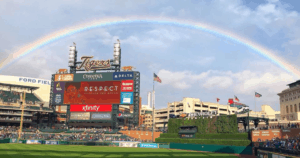 Via the Detroit Tigers, this stunning shot of a rainbow over Comerica Park this past week as the crowd honored Aretha Franklin with a moment of silence.A public visitation will be held for “The Queen of Soul” on Aug. 28 and 29 at Charles H. Wright Museum for African American History. Franklin, who’s net worth is estimated at $80 million, died intestate (without a will).
Via the Detroit Tigers, this stunning shot of a rainbow over Comerica Park this past week as the crowd honored Aretha Franklin with a moment of silence.A public visitation will be held for “The Queen of Soul” on Aug. 28 and 29 at Charles H. Wright Museum for African American History. Franklin, who’s net worth is estimated at $80 million, died intestate (without a will).
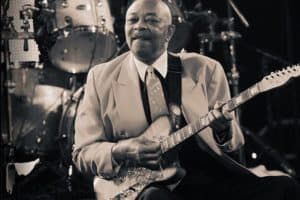 And then there were two. Funk Brother guitarist Eddie Willis passed away this week at his home in Gore Springs, MA, at the age of 82. Guitarist Joe Messina and percussionist Jack Ashford are the last surviving members of the group of Detroit-based session musicians who backed nearly every major Motown smash from 1959 until Berry Gordy moved the company to Los Angeles in 1972.
And then there were two. Funk Brother guitarist Eddie Willis passed away this week at his home in Gore Springs, MA, at the age of 82. Guitarist Joe Messina and percussionist Jack Ashford are the last surviving members of the group of Detroit-based session musicians who backed nearly every major Motown smash from 1959 until Berry Gordy moved the company to Los Angeles in 1972.
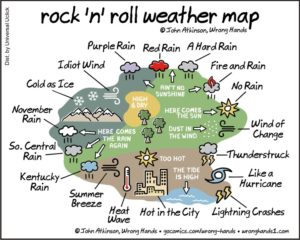 Our cartoon this week is a “rock ‘n’ roll weather map” from the pen of Ottawa, Ontario artist, John Atkinson. You can find more of his fascinating work at his WrongHands website. See if you can connect the references with the artists who inspired them. Click on the image to enlarge it. Several have direct connections with the Keener era.
Our cartoon this week is a “rock ‘n’ roll weather map” from the pen of Ottawa, Ontario artist, John Atkinson. You can find more of his fascinating work at his WrongHands website. See if you can connect the references with the artists who inspired them. Click on the image to enlarge it. Several have direct connections with the Keener era.
This week in Keener History: The Marvelettes earned Motown it’s first number one with “Please Mr. Postman” (Video) in 1961. Three years later, almost to the day, Martha and the Vandellas released “Dancing in the Street” (Video). On August 16, 1962, Ringo Starr made his first appearance as a Beatle at the 17th annual celebration for the Birkenhead, England Horticultural Society. He rehearsed with the band for two hours before the show. This week in 1963, James Meredith became the first African-American to graduate from the University of Mississippi. He was the first African-American to be admitted to the segregated university, an event that was a flashpoint in the civil rights movement. This week in 1965, Tina Turner, Bo Diddley, Jackie DeShannon, and Eddie Hodges appeared on Shindig on ABC and WXYZ-TV. And in 1968, “Fire” by The Crazy World of Arthur Brown (Video) enters the Keener chart at 28. It would peak at number 6 six weeks later.
 Keener birthdays include Barbara Eden, who became an icon of our generation when she won the lead role in the television series “I Dream of Jeannie” (Video). The show ran for 139 episodes on NBC and WWJ-TV between 1965 and 1970. Her early screen tests began in 1957, but she earned broader recognition as Lt. Cathy Connors in Irwin Allen’s Voyage to the Bottom of the Sea. Prior to Jeannie, Eden starred in the Cinerama film, The Wonderful World of the Brothers Grimm, and another Irwin Allen production, Five Weeks in a Balloon. After Jeannie, she co-starred in a Dallas story arc with her former “master”, Larry Hagman. Barbara Eden turned 87 on August 23.
Keener birthdays include Barbara Eden, who became an icon of our generation when she won the lead role in the television series “I Dream of Jeannie” (Video). The show ran for 139 episodes on NBC and WWJ-TV between 1965 and 1970. Her early screen tests began in 1957, but she earned broader recognition as Lt. Cathy Connors in Irwin Allen’s Voyage to the Bottom of the Sea. Prior to Jeannie, Eden starred in the Cinerama film, The Wonderful World of the Brothers Grimm, and another Irwin Allen production, Five Weeks in a Balloon. After Jeannie, she co-starred in a Dallas story arc with her former “master”, Larry Hagman. Barbara Eden turned 87 on August 23.
 Were you a member of Scott Regen‘s Burger Club? Scott picked up the phone one night and heard a listener declare, “How are ya doing Burger?” It turned out that at this young man’s school, everything cool had the word “burger” tagged on the end of it. The next time he cracked the mic, Keener’s evening entertainer said, “This is Scott Burger”. And the snowball started rolling from there. Eileen Shapiro, from Clinton Jr. High School, helped form “The Royal Order of Burgers” and ended up on the air. Hear the full story of the birth of the Burger Club in Scott’s own words here.
Were you a member of Scott Regen‘s Burger Club? Scott picked up the phone one night and heard a listener declare, “How are ya doing Burger?” It turned out that at this young man’s school, everything cool had the word “burger” tagged on the end of it. The next time he cracked the mic, Keener’s evening entertainer said, “This is Scott Burger”. And the snowball started rolling from there. Eileen Shapiro, from Clinton Jr. High School, helped form “The Royal Order of Burgers” and ended up on the air. Hear the full story of the birth of the Burger Club in Scott’s own words here.
Keener Number Ones for this week include:
(1964) House of the Rising Sun, Animals
(1965) Unchained Melody, Righteous Brothers
(1966) You Can’t Hurry Love, Supremes
(1967) Brown Eyed Girl, Van Morrison
(1968) Harper Valley PTA, Jeannie C Riley
(1969) Sugar Sugar, Archies
(1970) Ain’t No Mountain High Enough, Diana Ross
(1971) Go Away Little Girl, Donny Osmond
This week’s deep dive into the WKNR Music Guide centers on August 24, 1970. It was an eclectic mix representative of the wide swath that was pop music in the day, with Diana Ross at Number 1 with “Ain’t No Mountain High Enough” (We prefer the Marvin and Tammi interpretation of Nickolas Ashford & Valerie Simpson‘s composition – Video). Detroit Dragway, promoted on the back of the guide, was still in its heyday. Here’s a link to classic Detroit Dragway commercial from 1964. Jim Tate was Keener’s morning man that year (Air Check). Bob Green remembers , “Jim came to WKNR in an Orange El Dorado with a big ‘JT’ emblazoned on the front. I was PD, and thought, ‘Oh boy, what kind of prima donna do we have here?’ This is the best example of ‘looks can be deceiving’. Jim was one of the most sincere, gentle, kind and fine individuals I ever had the luck to work with. Add to it the talent and work ethic he had… and Jim was a ‘star’ in the true sense of the word. I will always miss him.” We lost Jim to cancer in 1989.
We’ leave you with the Number 25 song from this week in 1970; a live version of Three Dog Night‘s “Out in the Country“.
Keener on Spotify
During Keener’s prime, the station released a four albums of “Oldies But Goodies”; collections of hits from the recent past that continued to find their way onto the hitlines and the WKNR playlist. You can enjoy these, along with curated playlists of other Keener faves by visiting our Spotify page. Here are direct links to each of the LPs. Only two of the tunes (marked with an *) are not currently in the Spotify library. Click on the album covers to go directly to the playlist.
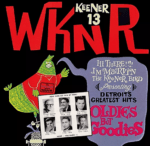 Sandy Nelson – Teen Beat
Sandy Nelson – Teen Beat
Gene Chandler – Duke Of Earl
Dee Dee Sharp – Mashed Potato Time
Bobby Rydell – Kissin’ Time
Hollywood Argyles – Alley-Oop
Bobby Day – Rockin’ Robin
The Skyliners – Since I Don’t Have You
Jerry Butler – He Will Break Your Heart
The Paris Sisters – I Love How You Love Me
Dee Clark – Raindrops
Rosie & The Originals – Angel Baby
Ritchie Valens – Donna
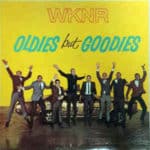 Chris Montez – Let’s Dance
Chris Montez – Let’s Dance
The Shirelles – Soldier Boy
Del Shannon – Runaway
Kathy Young – A Thousand Stars
The Volumes – I Love You
J. Frank Wilson – Last Kiss
Ritchie Valens – La Bamba
Gary U.S. Bonds – New Orleans
Bobby Darin – Mack The Knife
The Jarmels – A Little Bit Of Soap
Maurice Williams – Stay
The Drifters On – Broadway
Dion – Run Around Sue
The Champs – Tequila
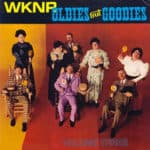 The Castaways – Liar, Liar
The Castaways – Liar, Liar
The Blue Jays – Lovers’ Island
The Dixie Cups – Chapel Of Love
The Tymes – So Much In Love
Jewel Akens – The Birds And The Bees
Terry Stafford – Suspicion
Little Caesar & The Romans – Those Oldies But Goodies
The Chiffons – He’s So Fine
Ronnie Dove – Say You
Barbara George – I Know
Dale & Grace – I’m Leaving It Up To You
Joey Dee & The Starliters – Peppermint Twist
The Essex – Easier Said Than Done*
The Adlibs – The Boy From New York City
 The Association – Along Comes Mary
The Association – Along Comes Mary
Fontella Bass – Rescue Me
Don & Juan – What’s Your Name
Bob Lind – Elusive Butterfly
The Newbeats – Bread And Butter
The Casinos – Then You Can Tell Me Goodbye
The Jaynetts – Sally, Go ‘Round The Roses
Curtis Lee – Pretty Little angel Eyes
The Five Americans – Western Union
Syndicate Of Sound – Little Girl
The Lovin’ Spoonful – Summer In The City
Count Five – Psychotic Reaction
James & Bobby Purify – I’m Your Puppet
Bobby Lewis – Tossin’ And Turnin’
The Bobby Fuller Four – I Fought The Law
B.J. Thomas – I’m So Lonesome I Could Cry
Billy Stewart – Summertime
? & The Mysterians – 96 Tears
Del Shannon – Hat’s Off To Larry*
The Isley Brothers – Twist And Shout
This Week in Keenerland: August 19
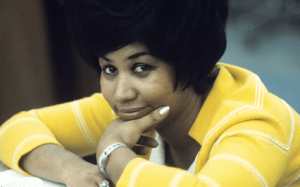 Keenerfans everywhere are mourning the passing of the true “Queen of Soul”. Although Aretha Franklin never sang for the Motown label, her brand was inextricably connected to the Motor City. Like the town she called home, Aretha endured life’s ups and downs, resiliently introducing each new generation to her unique musical gifts. She charted 22 times on the WKNR Music Guide, beginning in March of 1967 with “I Never Loved a Man (The Way I Love You)” (Video). Her final Keener hit was “Daydreaming” (Video) in February of 1972, but she would continue to be heard on our radios well into the new millennium. President Obama may have captured Aretha’s essence in his Facebook eulogy: “In her voice, we could feel our history, all of it and in every shade—our power and our pain, our darkness and our light, our quest for redemption and our hard-won respect. She helped us feel more connected to each other, more hopeful, more human. And sometimes she helped us just forget about everything else and dance.” As we’ll see later, Aretha was at number one on Keener, this week in both 1970 and 1971.
Keenerfans everywhere are mourning the passing of the true “Queen of Soul”. Although Aretha Franklin never sang for the Motown label, her brand was inextricably connected to the Motor City. Like the town she called home, Aretha endured life’s ups and downs, resiliently introducing each new generation to her unique musical gifts. She charted 22 times on the WKNR Music Guide, beginning in March of 1967 with “I Never Loved a Man (The Way I Love You)” (Video). Her final Keener hit was “Daydreaming” (Video) in February of 1972, but she would continue to be heard on our radios well into the new millennium. President Obama may have captured Aretha’s essence in his Facebook eulogy: “In her voice, we could feel our history, all of it and in every shade—our power and our pain, our darkness and our light, our quest for redemption and our hard-won respect. She helped us feel more connected to each other, more hopeful, more human. And sometimes she helped us just forget about everything else and dance.” As we’ll see later, Aretha was at number one on Keener, this week in both 1970 and 1971.
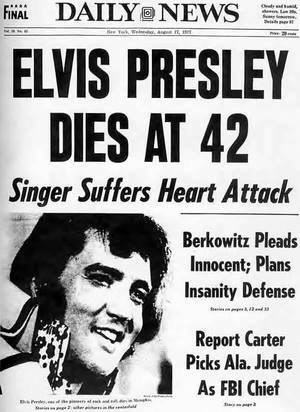 The day Aretha died also marked the 41st anniversary of the passing of Elvis Presley. That event, like the Kennedy Assassination and the day the ’68 Tigers clinched the World Series became a milepost where we stopped to remember where we were and what we were doing. “The King” was just 42 when he left us, but his brand continues to permeate every platform, including identities on both Facebook and Twitter. His estate earned $35 million dollars in 2017 alone. Of the 25 Elvis hits that made their way to the WKNR Music Guide, only “Suspicious Minds” (Video) reached number one.
The day Aretha died also marked the 41st anniversary of the passing of Elvis Presley. That event, like the Kennedy Assassination and the day the ’68 Tigers clinched the World Series became a milepost where we stopped to remember where we were and what we were doing. “The King” was just 42 when he left us, but his brand continues to permeate every platform, including identities on both Facebook and Twitter. His estate earned $35 million dollars in 2017 alone. Of the 25 Elvis hits that made their way to the WKNR Music Guide, only “Suspicious Minds” (Video) reached number one.
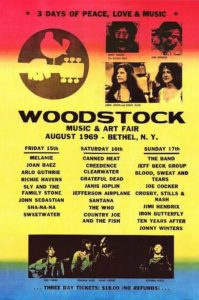 This week is the 49th anniversary of the Woodstock Music and Art Fair, shortened to simply “Woodstock” by the nearly half million music fans who invaded Max Yasgur’s farm in upstate New York. The event and the movie that documented it, amplified a number of musical careers, including Jimi Hendrix, Santana, Joe Cocker, Richie Havens and The Who. In 1969, WKNR-FM was at the height of it’s “Underground” glory, competing with WABX and what was then called WXYZ-FM as the Progressive Rock Genre was born. Here is a rare 90 minute clip of WKNR-FM, recorded on April 27th, 1969.
This week is the 49th anniversary of the Woodstock Music and Art Fair, shortened to simply “Woodstock” by the nearly half million music fans who invaded Max Yasgur’s farm in upstate New York. The event and the movie that documented it, amplified a number of musical careers, including Jimi Hendrix, Santana, Joe Cocker, Richie Havens and The Who. In 1969, WKNR-FM was at the height of it’s “Underground” glory, competing with WABX and what was then called WXYZ-FM as the Progressive Rock Genre was born. Here is a rare 90 minute clip of WKNR-FM, recorded on April 27th, 1969.
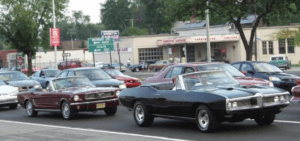 It was Woodward Dream Cruise week in Detroit and the 15th anniversary of Keener’s brief rebirth on the original 1310 AM frequency in August of 2003. Despite a power blackout that blanked much of the east coast, including Detroit, we were on the air with Bob Green, Pat St. John, Michael Stevens, Scott Regen and the other great voices who made radio history in Detroit. Recordings of that historic broadcast are collectors’ items.
It was Woodward Dream Cruise week in Detroit and the 15th anniversary of Keener’s brief rebirth on the original 1310 AM frequency in August of 2003. Despite a power blackout that blanked much of the east coast, including Detroit, we were on the air with Bob Green, Pat St. John, Michael Stevens, Scott Regen and the other great voices who made radio history in Detroit. Recordings of that historic broadcast are collectors’ items.
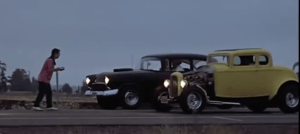 In August of 1973, George Lucas came to our attention as the director of American Graffiti, a film that set him up to create the Star Wars franchise and polished the stardom of it’s ensemble cast: Ron Howard, Richard Dreyfuss, Cindy Williams, Paul LeMat, Charlie Martin Smith, Harrison Ford, Mackenzie Phillips and Candy Clark. It also introduced a new audience to Robert Weston Smith and his broadcasting altar ego, Wolfman Jack.
In August of 1973, George Lucas came to our attention as the director of American Graffiti, a film that set him up to create the Star Wars franchise and polished the stardom of it’s ensemble cast: Ron Howard, Richard Dreyfuss, Cindy Williams, Paul LeMat, Charlie Martin Smith, Harrison Ford, Mackenzie Phillips and Candy Clark. It also introduced a new audience to Robert Weston Smith and his broadcasting altar ego, Wolfman Jack.
Keener #1 hits for the week ending August 18 include:
(1964) House of the Rising Sun, Animals
(1965) You Were On My Mind, We Five
(1966) You Can’t Hurry Love, Supremes
(1967) Society’s Child, Janis Ian
(1968) 1-2-3 Red Light, 1910 Fruit Gum Co
(1969) A Boy Named Sue, Johnny Cash
(1970) Don’t Play That Song, Aretha Franklin
(1971) Spanish Harlem, Aretha Franklin
Our WKNR Music Guide this week comes from the Summer of 1967. It shows Keener at the zenith of its popularity with the Sgt. Pepper’s Lonely Hearts Club Band LP leading the pack and a Top 13 list that celebrated some great Michigan Music from the likes of Bob Seger, The Temptations and The Fantastic Four. Janis Ian‘s “Society’s Child” had just slipped from the top spot. Janis was 16 years old when Society’s Child became a hit. Here’s video of her performing the tune on the Smothers Brothers Comedy Hour.
We’ll leave you with a rare live Aretha Franklin performance, recorded in Amsterdam in 1968. Godspeed, Aretha. Your legacy lives on.
https://www.youtube.com/watch?v=jFN6-O1NHeM
This Week in Keenerland: August 12
 Lots of ground to cover this week in Keenerland!
Lots of ground to cover this week in Keenerland!
It was a big day in Detroit automotive history on Wednesday: the 10 millionth Ford Mustang rolled off the assembly line. There was a parade of Mustangs from every year of production: 1964-2018 from Ford World HQ in Dearborn to the Flat Rock Assembly Plant (where Mustangs are assembled) It’s been the best selling sports car in America over the past 50 years. The Mustang was first revealed to the public on April 17, 1964, at the New York World’s Fair.
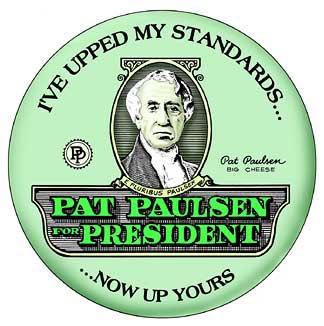 With the highest primary turnout in Michigan history, we celebrated by remembering Pat Paulesn‘s 1968 presidential run. Paulsen gained fame on the CBS-TV “Smothers Brothers Comedy Hour”. His presidential run became a perennial event during his prime. Here’s a link to several of Pat’s Smothers Brothers “Editorials”, which lead Tom and Dick to suggest the notion of running for Commander in Chief. According to Wikipedia, “Paulsen’s name appeared on the ballot in New Hampshire for the Democratic primary several times. In 1996, he received 921 votes (1%) to finish second to President Bill Clinton (76,754 votes); this was actually ahead of real politicians such as Buffalo mayor James D. Griffin. In 1992, he came in second to George Bush in the North Dakota Republican Primary. In the 1992 Republican Party primaries, he received 10,984 votes total.”
With the highest primary turnout in Michigan history, we celebrated by remembering Pat Paulesn‘s 1968 presidential run. Paulsen gained fame on the CBS-TV “Smothers Brothers Comedy Hour”. His presidential run became a perennial event during his prime. Here’s a link to several of Pat’s Smothers Brothers “Editorials”, which lead Tom and Dick to suggest the notion of running for Commander in Chief. According to Wikipedia, “Paulsen’s name appeared on the ballot in New Hampshire for the Democratic primary several times. In 1996, he received 921 votes (1%) to finish second to President Bill Clinton (76,754 votes); this was actually ahead of real politicians such as Buffalo mayor James D. Griffin. In 1992, he came in second to George Bush in the North Dakota Republican Primary. In the 1992 Republican Party primaries, he received 10,984 votes total.”
48 years ago this week, The Goose Lake International Music Festival was held near Jackson. While Woodstock got the movie and the forever fame, Goose Lake wasn’t far behind. Construction company owner Richard Songer teamed up with WKNR-FM’s Russ Gibb to put on the show. And what a show it was. Over 200,000 people were on hand to hear performances by The Faces featuring Rod Stewart, Jethro Tull, Chicago, Ten Years After, The Flying Burrito Brothers, Mountain, John Sebastian, the James Gang featuring Joe Walsh, The Flock and The Litter. Local heroes on the revolving stage included: Bob Seger, the MC5, The Stooges, Detroit featuring Mitch Ryder, Brownsville Station, Savage Grace, Third Power and SRC. Masters of ceremonies were Teegarden & Van Winkle, who also performed. After over 150 drug arrests were made, Michigan attorney general Frank J. Kelley said, “I think we have seen the first and last rock concert of that size in Michigan”. And he was right. And speaking of John Sebastian, here’s a NYT Tale about how The Lovin’ Spoonful‘s “Summer in the City” became the sound track for every city’s summer.
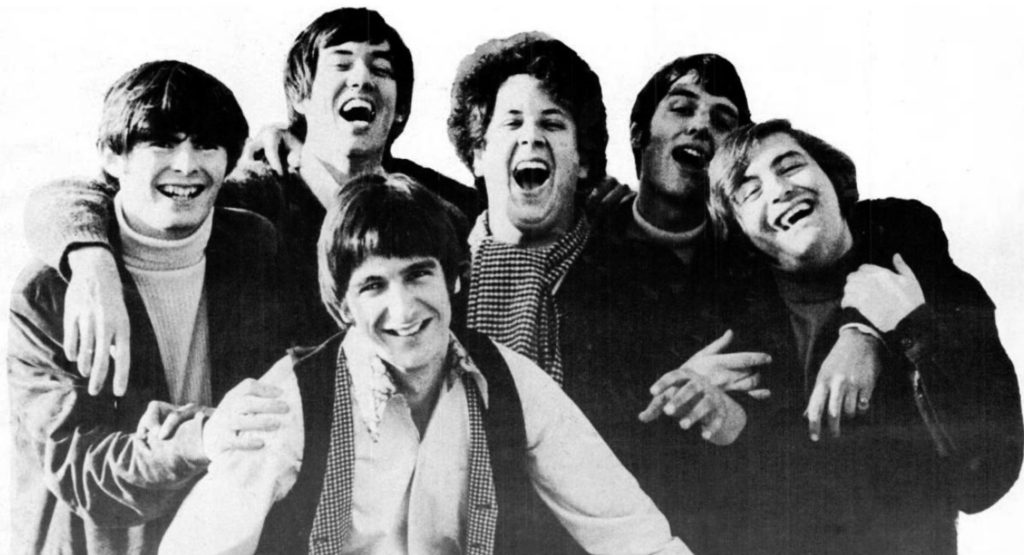 Turtle Trivia: On August 7, 1965, The Turtles released what would become their first hit record, the Bob Dylan penned, “It Ain’t Me Babe” (Video). The former “Crossfires” would hit 11 times on Keener, their biggest being 1967’s “Happy Together” (Video). Mark Volman and Howard Kaylan would continue to perform in many incarnations, as members of Frank Zappa‘s band and as the duo “Flo and Eddie”.
Turtle Trivia: On August 7, 1965, The Turtles released what would become their first hit record, the Bob Dylan penned, “It Ain’t Me Babe” (Video). The former “Crossfires” would hit 11 times on Keener, their biggest being 1967’s “Happy Together” (Video). Mark Volman and Howard Kaylan would continue to perform in many incarnations, as members of Frank Zappa‘s band and as the duo “Flo and Eddie”.
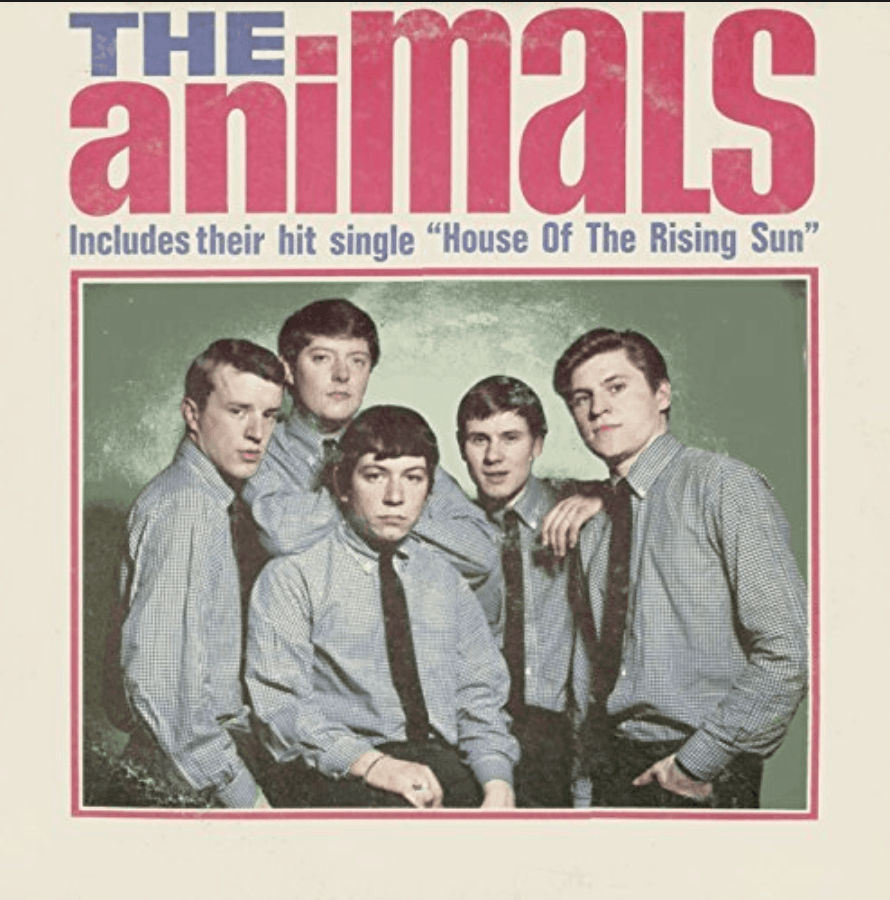 This week in 1964, The Animals released “House of the Rising Sun” (Video). Legend has it that they recorded the tune in just one take, in less than 10 minutes. Clocking in at 4:29, the record was deemed a little too long for Keener’s tight formatics, so Paul Cannon made a special 2:58 edit that MGM records latched onto. It became the most ubiquitous version played on Top 40 stations across the country.
This week in 1964, The Animals released “House of the Rising Sun” (Video). Legend has it that they recorded the tune in just one take, in less than 10 minutes. Clocking in at 4:29, the record was deemed a little too long for Keener’s tight formatics, so Paul Cannon made a special 2:58 edit that MGM records latched onto. It became the most ubiquitous version played on Top 40 stations across the country.
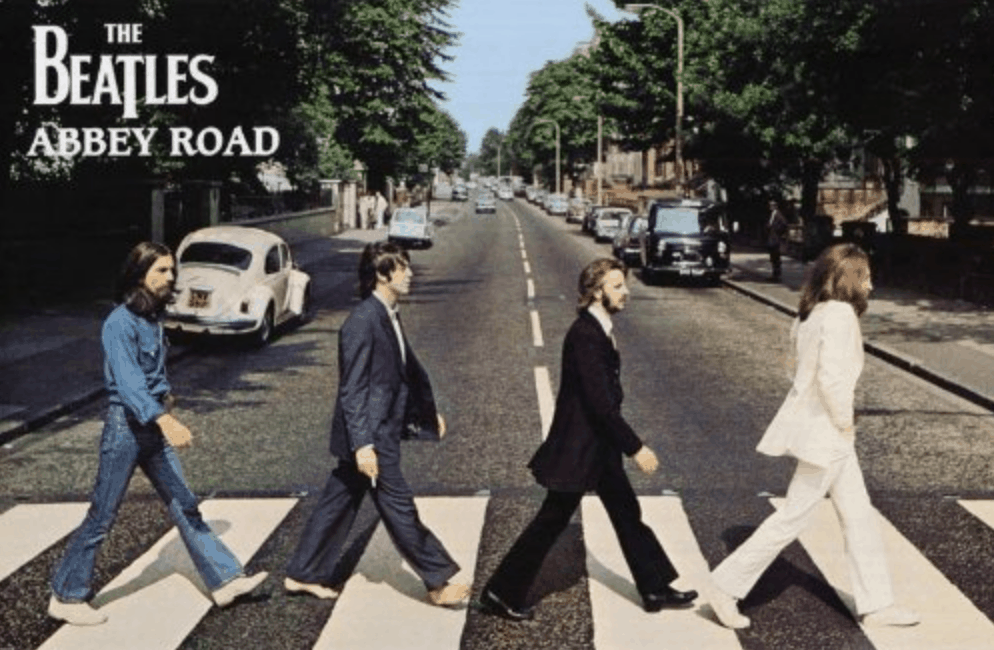 This was also the week when the iconic Abbey Road album cover was shot by photographer Iain MacMillan. “Paul Is Dead” conspiracy theorists believe that his barefoot stride was an indicator that he was, in fact, a corpse. Other iterations of the 6 photos MacMillian took while balanced on a step ladder show Paul in flip-flops. McCartney, who ultimately selected the iconic cover photo, later claimed that he went barefoot because it was simply a hot day. Although “Let It Be” was released later, “Abbey Road” was the final Beatles studio collaboration. BTW, The most well researched book on the Paul Is Dead phoenominon is “Turn Me On, Dead Man: The Beatles and the Paul McCartney Death Hoax“, written by Andru Reeve. It’s great reading for any Keenerfan.
This was also the week when the iconic Abbey Road album cover was shot by photographer Iain MacMillan. “Paul Is Dead” conspiracy theorists believe that his barefoot stride was an indicator that he was, in fact, a corpse. Other iterations of the 6 photos MacMillian took while balanced on a step ladder show Paul in flip-flops. McCartney, who ultimately selected the iconic cover photo, later claimed that he went barefoot because it was simply a hot day. Although “Let It Be” was released later, “Abbey Road” was the final Beatles studio collaboration. BTW, The most well researched book on the Paul Is Dead phoenominon is “Turn Me On, Dead Man: The Beatles and the Paul McCartney Death Hoax“, written by Andru Reeve. It’s great reading for any Keenerfan.
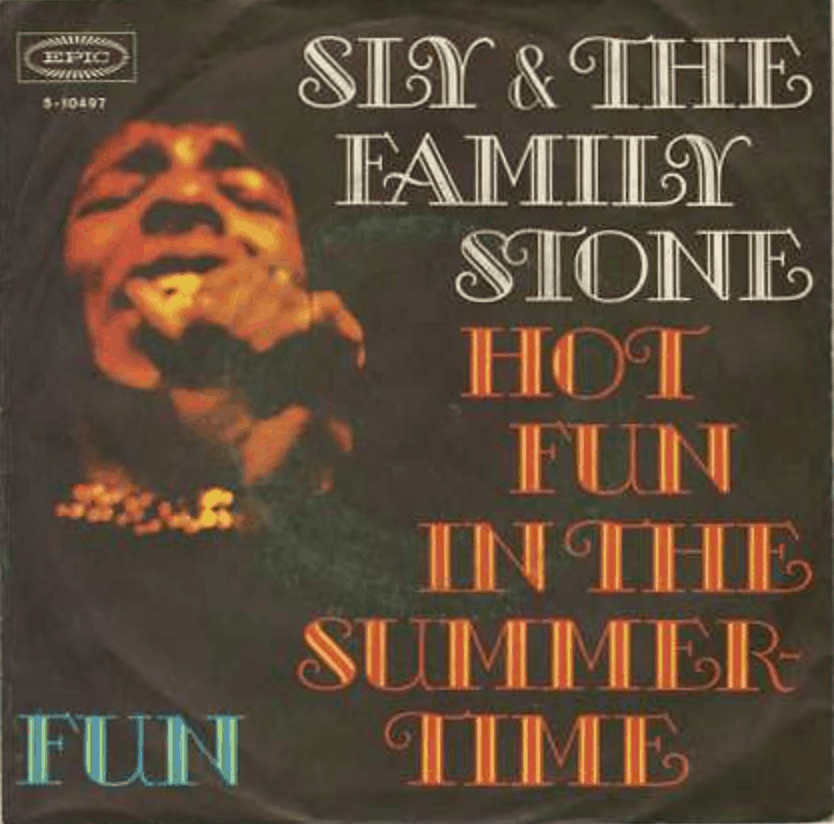 In 1969, Sly and the Family Stone released “Hot Fun in the Summertime” (Video), one of 10 WKNR chart appearances for the former San Francisco disc Jockey and Denton, Texas native, Sylvester Stewart and his band. It was released in the wake of their appearance at Woodstock, an event that greatly expanded their fanbase. It’s also one of three hit singles that were never released on an LP, until Sly’s Greatest Hits collection came out in 1970.
In 1969, Sly and the Family Stone released “Hot Fun in the Summertime” (Video), one of 10 WKNR chart appearances for the former San Francisco disc Jockey and Denton, Texas native, Sylvester Stewart and his band. It was released in the wake of their appearance at Woodstock, an event that greatly expanded their fanbase. It’s also one of three hit singles that were never released on an LP, until Sly’s Greatest Hits collection came out in 1970.
The Keener Question of the Week: What album had the biggest impact on you as a teenager? Here is what a number of Keener Facebook Fans told us.
Did you know.. that this week in 1957 American Bandstand debuted on ABC-TV with Dick Clark as the host? Clark had been doing the show at WFIL Philadelphia, where it had been a mainstay since Bob Horn originated it in 1954. Clark’s first ABC guest: Buddy Holly. In a 1965 concert this week in Chicago, Mike Smith, lead singer of the Dave Clark Five, had two ribs broken when he was pulled off the stage by overzealous fans. Meanwhile, at the Columbia Recording Studio in Nashville, Roger Miller jumped on the British Invasion bandwagon, recording “England Swings.” From the “who discovered who” department, this week in 1969, Diana Ross hosted a party At the Beverly Hills Daisy Club for 350 special guests to announce “her discovery,” a singing group called the Jackson 5. It was actually the mercurial Bobby Taylor who discovered them and Gladys Knight who recommended them to Motown label boss Berry Gordy, Jr. Taylor passed away last year at age 83.
Keener birthdays this week include:
August 7 B.J. Thomas – 75
August 8 Connie Stevens – 79
August 9 Barbara Mason – 70
August 10 Ian Anderson – 70
August 11 Eric Carmen – 68
August 12 Buck Owens would have been 88. He passed away at age 76 in March of 2006.
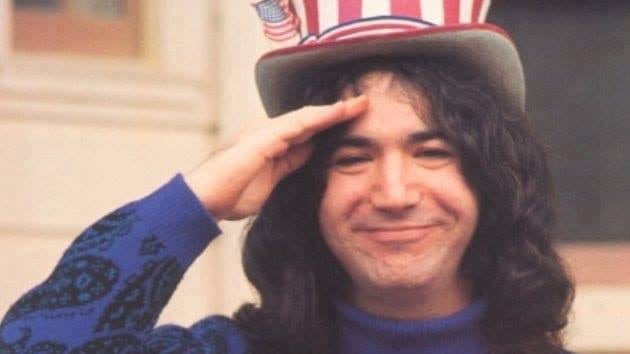 Hard to believe it’s been 13 years since Jerry Garcia left us. Like too many of the great musical talents of the Keener age, Jerry struggled with addiction and health problems. And yet, he was a central personality in the founding and the 3 decade career of the prolific and continually touring Grateful Dead. While the Dead never charted on WKNR-AM, they were prominently featured on Keener FM.
Hard to believe it’s been 13 years since Jerry Garcia left us. Like too many of the great musical talents of the Keener age, Jerry struggled with addiction and health problems. And yet, he was a central personality in the founding and the 3 decade career of the prolific and continually touring Grateful Dead. While the Dead never charted on WKNR-AM, they were prominently featured on Keener FM.
Keener #1 hits for the week ending August 12 include:
(1964) Bread & Butter, New Beats
(1965) You Were On My Mind, We Five
(1966) See You in September, Happenings
(1967) Society’s Child, Janis Ian
(1968) People Got To Be Free, Rascals
(1969) A Boy Named Sue, Johnny Cash
(1970) In The Summertime, Mungo Jerry
(1971) How Can You Mend a Broken Heart, Bee Gees
This week’s deep dive into the WKNR Music Guide comes from the week of August 14, 1969. Johnny Cash was at number 1 with Shel Silverstein‘s, “A Boy Named Sue” (Video). We’re pretty sure that Keener bleeped the SOB line near the end. Ed Busch came to WKNR from CKLW and worked at W4 after his Keener service. Here’s a Freep story about his time across the river, courtesy of our good friends at Motor City Radio Flashbacks. Columnist Loraine Alterman is the “Loraine” you see Frankie Valli talking with in Jersey Boys. She went on to marry Young Frankenstein actor Peter Boyle. That Oakland Mall concert featuring Bob Seger, Savage Grace, The Third Power and The Sky ended up drawing north of 20,000 attendees.
Dave Mason posted this New Yorker comic on his Facebook Page. So many from our generation can relate to both the story and the way we’re telling it these days…
And finally, in celebration of last week’s National Oyster Day, we featured this classic Curly Howard video on the Keener FB page. Brings back memories of watching the boys on Channel 7 with Johnny Ginger!
This week in Keenerland: August 5
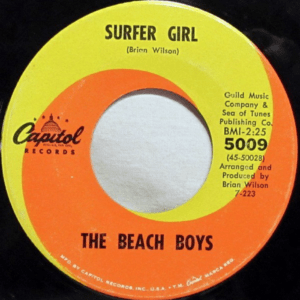 Surfer Girl turns 55. On August 3, 1963, Brian Wilson got his first producer credit as this Capitol Records release cracked the Billboard Hot 100. It stayed on the charts for 56 weeks, peaking at number 7. Keener’s debut was still a little over two months away when this quintessential summer song was released but The Beach Boys would become Motor City Favorites, charting 21 times on the WKNR Music Guide, making them the 7th most popular artists in the Keener era. Here’s a link to a live “Surfer Girl” performance from 1964. You get a great sense for the power of the boys’ harmonies and their ability to recreate the Wrecking Crew’s studio work on stage.
Surfer Girl turns 55. On August 3, 1963, Brian Wilson got his first producer credit as this Capitol Records release cracked the Billboard Hot 100. It stayed on the charts for 56 weeks, peaking at number 7. Keener’s debut was still a little over two months away when this quintessential summer song was released but The Beach Boys would become Motor City Favorites, charting 21 times on the WKNR Music Guide, making them the 7th most popular artists in the Keener era. Here’s a link to a live “Surfer Girl” performance from 1964. You get a great sense for the power of the boys’ harmonies and their ability to recreate the Wrecking Crew’s studio work on stage.
 It’s been 26 years since a Detroit Tiger entered the baseball hall of fame. That error was rectified as Alan Trammell and Jack Morris were inducted at Cooperstown. The last tiger to enter the hall was Hal “Prince” Newhouser. Sparky Anderson made it back in 2000. But although his longest big league gig was in Detroit, his induction was associated with his leadership of the Cincinnati Reds. Even though, most of us Keenerfans identify with the ’68 tigers, Trammell and Morris brought the pennant home to Detroit as members of the 1984 World Championship team.
It’s been 26 years since a Detroit Tiger entered the baseball hall of fame. That error was rectified as Alan Trammell and Jack Morris were inducted at Cooperstown. The last tiger to enter the hall was Hal “Prince” Newhouser. Sparky Anderson made it back in 2000. But although his longest big league gig was in Detroit, his induction was associated with his leadership of the Cincinnati Reds. Even though, most of us Keenerfans identify with the ’68 tigers, Trammell and Morris brought the pennant home to Detroit as members of the 1984 World Championship team.
 From the Bob Seger trivia department, there is now a bar honoring one of Seger’s biggest hits. According to MLive, Cat Man Do celebrated a grand opening in Unionville on July 27. Owner Dennis Collon first encountered Seger when he and “The Last Heard” played the American Legion Hall in Unionville in 1967. The Cat Man Do menu includes a “Silver Bullet” burger, “Katmandu” burger and “Bob Seger” grilled ham and cheese.
From the Bob Seger trivia department, there is now a bar honoring one of Seger’s biggest hits. According to MLive, Cat Man Do celebrated a grand opening in Unionville on July 27. Owner Dennis Collon first encountered Seger when he and “The Last Heard” played the American Legion Hall in Unionville in 1967. The Cat Man Do menu includes a “Silver Bullet” burger, “Katmandu” burger and “Bob Seger” grilled ham and cheese.
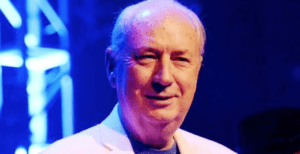 Monkee fans got a scare when Mike Nesmith collapsed during a sound check at a recent concert at the Keswick Theatre in Glenside, PA. When doctors took a look they recommended quadruple bypass surgery, leading to cancellation of the last 4 dates of “The Mike and Mickey Show”. Nesmith told Rolling Stone Magazine, “I think, candidly, I’m back to 80 percent.. I’m seeing the light at the end of the tunnel. It all feels like a natural healing process.” Monkee Davy Jones died of a heart attack in February of 2012.
Monkee fans got a scare when Mike Nesmith collapsed during a sound check at a recent concert at the Keswick Theatre in Glenside, PA. When doctors took a look they recommended quadruple bypass surgery, leading to cancellation of the last 4 dates of “The Mike and Mickey Show”. Nesmith told Rolling Stone Magazine, “I think, candidly, I’m back to 80 percent.. I’m seeing the light at the end of the tunnel. It all feels like a natural healing process.” Monkee Davy Jones died of a heart attack in February of 2012.
 Paul McCartney returned to “where it all began” with a surprise concert at the Cavern Club. It’s a departure from Paul’s usual venues, stadiums holding 180,000 plus; The Cavern Club’s fire capacity is just 350 people. NBC remembered that the Beatles played at the Cavern, before finding fame, in 1961. The original club closed 12 years later and was eventually demolished. Some entrepreneurial soul saved bricks, which were used to build a new venue on the same spot. For those keeping score, The Fab Four had the most chart appearances on Keener, 47 during WKNR’s lifetime. McCartney himself did pretty well, too. He hit on the WKNR Music Guide 7 times as a solo act.
Paul McCartney returned to “where it all began” with a surprise concert at the Cavern Club. It’s a departure from Paul’s usual venues, stadiums holding 180,000 plus; The Cavern Club’s fire capacity is just 350 people. NBC remembered that the Beatles played at the Cavern, before finding fame, in 1961. The original club closed 12 years later and was eventually demolished. Some entrepreneurial soul saved bricks, which were used to build a new venue on the same spot. For those keeping score, The Fab Four had the most chart appearances on Keener, 47 during WKNR’s lifetime. McCartney himself did pretty well, too. He hit on the WKNR Music Guide 7 times as a solo act.
Keener #1s for the week ending August 4th include:
(1964) Bread & Butter, New Beats
(1965) I Got You Babe, Sonny & Cher
(1966) See You in September, Happenings
(1967) Society’s Child, Janis Ian
(1968) People Got To Be Free, Rascals
(1969) A Boy Named Sue, Johnny Cash
(1970) Close to You, Carpenters
(1971) How Can You Mend a Broken Heart, Bee Gees
And this week’s deep dive into the WKNR Music Guide comes from the week of August 4, 1965. Remember the Keener Lucky License Number contest? Extra credit if you also remembered the brand of gasoline that sponsored it. The Sinclair Oil Corporation was gobbled up by Atlantic Richfield in 1969.
And finally, from a Bob Hope special, two years before NBC became “The Full Color Network”, here are The We Five singing their one hit wonder, “You Were On My Mind”. It was at #2 this week in 1965.
https://www.youtube.com/watch?v=W-7QHWJOzbE
This week in Keenerland: July 22
From our ongoing list of things that turn 50 this year:
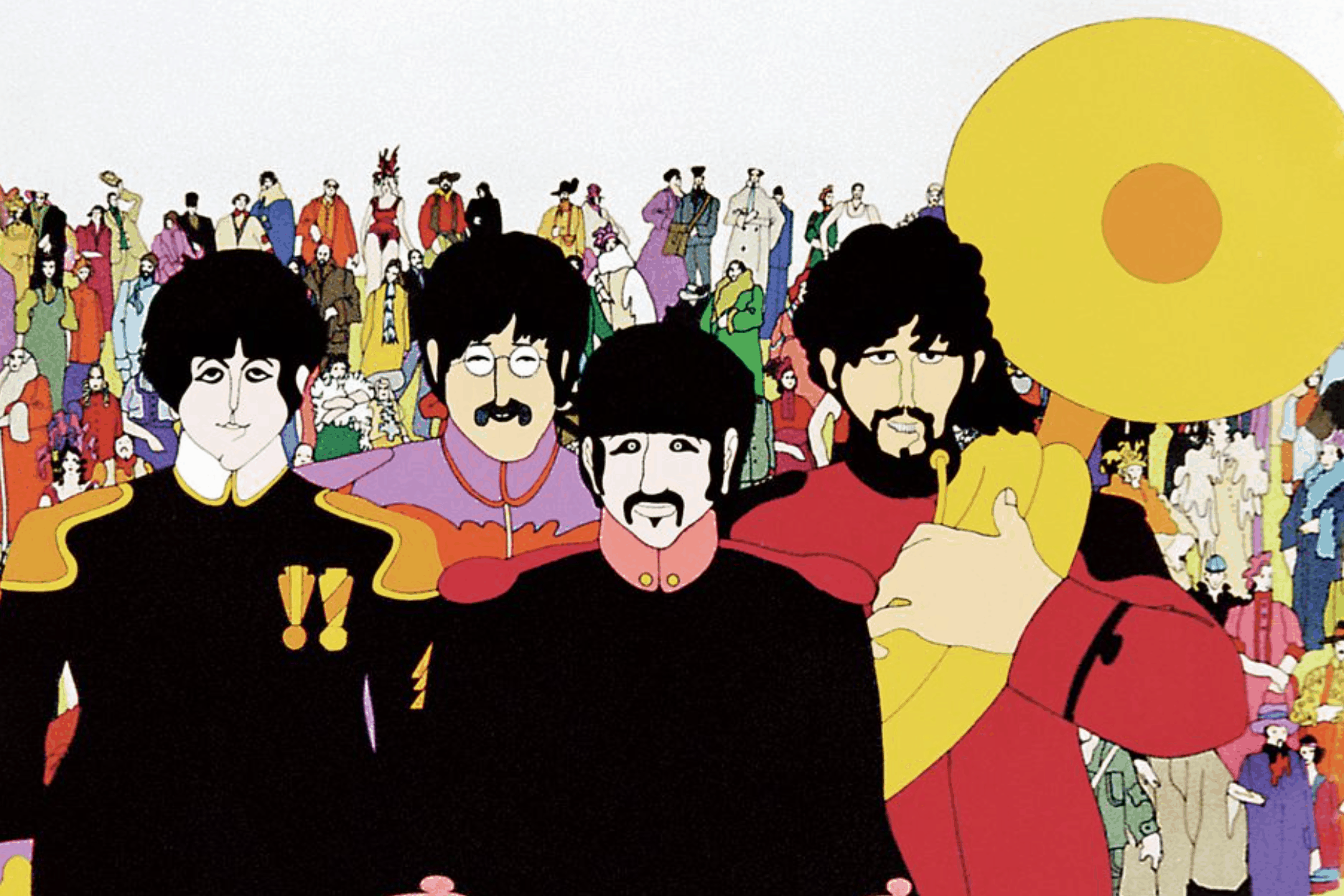 Happy 50th birthday, “Yellow Submarine“. The groundbreaking Beatle film of the same name premiered on July 17, 1968. This piece from Rolling Stone reminds us that, “The adventures of John, Paul, George and Ringo stands as a pop-art animated masterpiece – and a new rerelease reminds us of why it still feels ahead of its time.”
Happy 50th birthday, “Yellow Submarine“. The groundbreaking Beatle film of the same name premiered on July 17, 1968. This piece from Rolling Stone reminds us that, “The adventures of John, Paul, George and Ringo stands as a pop-art animated masterpiece – and a new rerelease reminds us of why it still feels ahead of its time.”
The anniversary was celebrated with a limited theatrical re-release of the film, a project that the Beatles were initially less then enthused about doing. They owed one more picture to United Artists but didn’t want a reprise of “Help”. Ever the problem solver, manager Brian Epstein suggested a feature length cartoon. Inspired by listening to the yet to be released “Sgt. Pepper’s Lonely Hearts Club Band” LP, the creative team of animators and writers, including future “Love Story” penman Erich Segal, found their muse.
As Rolling Stone’s David Fear puts it, “It doesn’t matter whether it’s been decades or merely days since you’ve seen it last. It’s still a hell of a lot weirder than you remember it being.”
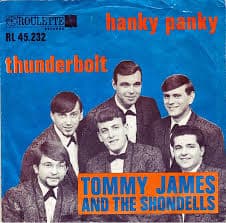 52 years ago this month Niles, Michigan’s Tommy James earned his first national number one with “Hanky Panky“. Originally written by written by Jeff Barry and Ellie Greenwich for their group, The Raindrops, The Shondells cover, recorded two years later launched Tommy’s star. But it didn’t happen overnight. Recorded at radio station WNIL and released on a regional label, Hanky Panky had a brief, regional prime, before Pittsburgh DJ, “Mad Mike” Metrovich, resurrected it a year later to growing acclaim. The then unemployed Tommy James took the single to New York, pitching it to Roulette Records. With the label’s national clout, Hanky Panky was on it’s way to the top of the charts.
52 years ago this month Niles, Michigan’s Tommy James earned his first national number one with “Hanky Panky“. Originally written by written by Jeff Barry and Ellie Greenwich for their group, The Raindrops, The Shondells cover, recorded two years later launched Tommy’s star. But it didn’t happen overnight. Recorded at radio station WNIL and released on a regional label, Hanky Panky had a brief, regional prime, before Pittsburgh DJ, “Mad Mike” Metrovich, resurrected it a year later to growing acclaim. The then unemployed Tommy James took the single to New York, pitching it to Roulette Records. With the label’s national clout, Hanky Panky was on it’s way to the top of the charts.
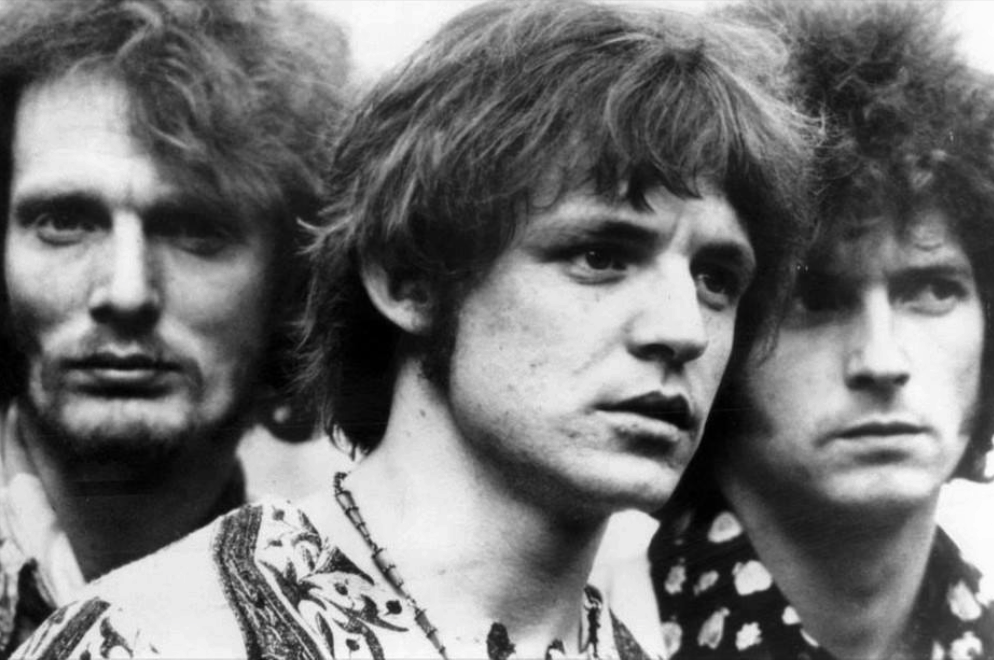 The term “Supergroup” was coined that same month in 1966, when Eric Clapton, Jack Bruce and Ginger Baker teamed up to form Cream. Their two biggest Keener hits were “Sunshine of Your Love” and “White Room“. And they hold the distinction of being the first band to earn a platinum selling double-album, “Wheels of Fire“. Cream’s star burned brightly and briefly. They dissolved in the spring of 1968, with each individual going on to further success, Baker and Clapton collaborating to form Blind Faith along with Steve Winwood and Rick Grech, Clapton adding magic to Delaney & Bonnie and Friends and Derek and the Dominoes, and Bruce enjoying a fruitful solo career.
The term “Supergroup” was coined that same month in 1966, when Eric Clapton, Jack Bruce and Ginger Baker teamed up to form Cream. Their two biggest Keener hits were “Sunshine of Your Love” and “White Room“. And they hold the distinction of being the first band to earn a platinum selling double-album, “Wheels of Fire“. Cream’s star burned brightly and briefly. They dissolved in the spring of 1968, with each individual going on to further success, Baker and Clapton collaborating to form Blind Faith along with Steve Winwood and Rick Grech, Clapton adding magic to Delaney & Bonnie and Friends and Derek and the Dominoes, and Bruce enjoying a fruitful solo career.
 Want your own replica of the original TV Batmobile? Mark Racop and his company, Fiberglass Freaks, can make you one. The ode to the George Barris design starts at $99K with tricked out versions topping out at a quarter million. Barris’ original was built on a one-off Ford Lincoln Futura chassis with Ford Galaxie parts contributing to two replicas, built for show and one for the drag racing circuit. As Wikipedia notes, Tim Burton‘s live-action films Batman (1989) and Batman Returns (1992) presented a different version of the Batmobile, which reflected those films’ Art Deco version of Gotham City, both of which were designed by Anton Furst. It was long, low and sleek, and was built on a Chevrolet Impala chassis. We’re partial to the original.
Want your own replica of the original TV Batmobile? Mark Racop and his company, Fiberglass Freaks, can make you one. The ode to the George Barris design starts at $99K with tricked out versions topping out at a quarter million. Barris’ original was built on a one-off Ford Lincoln Futura chassis with Ford Galaxie parts contributing to two replicas, built for show and one for the drag racing circuit. As Wikipedia notes, Tim Burton‘s live-action films Batman (1989) and Batman Returns (1992) presented a different version of the Batmobile, which reflected those films’ Art Deco version of Gotham City, both of which were designed by Anton Furst. It was long, low and sleek, and was built on a Chevrolet Impala chassis. We’re partial to the original.
Keener #1s for the week ending June 22 include:
(1964) Where Did Our Love Go, Supremes
(1965) Nobody Knows What’s Going On, Chiffons
(1966) The Pied Piper, Crispian St. Peters
(1967) I Wanna Testify, Parliaments
(1968) Classical Gas, Mason Williams
(1969) In The Year 2525, Zager & Evans
(1970) Close to You, Carpenters
(1971) Smiling Faces Sometimes, Undisputed Truth
And this week’s deep dive into the WKNR Music Guide comes from the week of July 22, 1970, featuring radio legend Pat St. John on the cover. How many of these Keener hits do you remember?
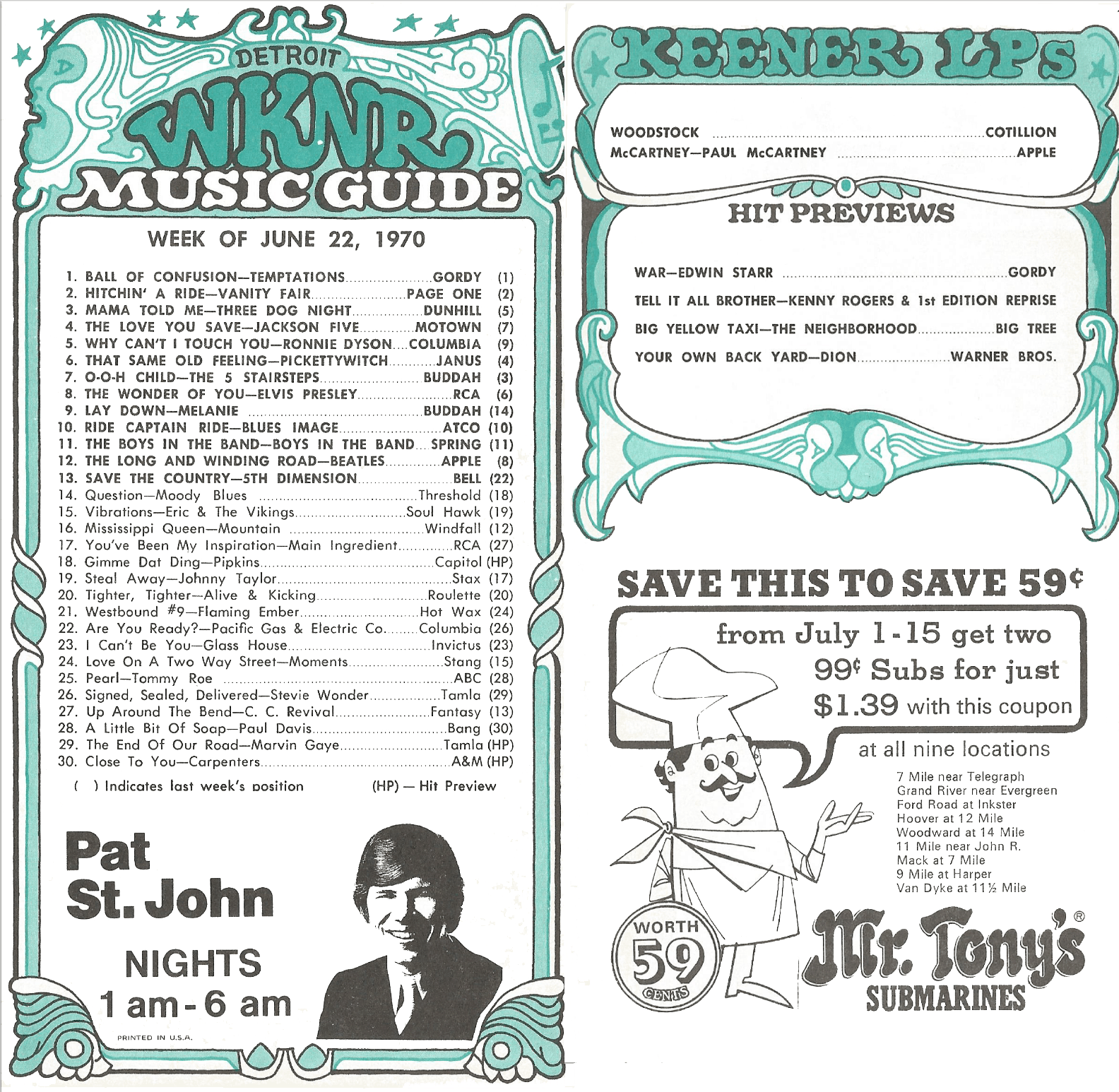
And finally, here’s a “live” rendition of this week’s number one from 1970. The Temps performing “Ball of Confusion”.

